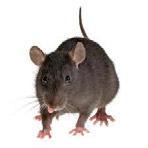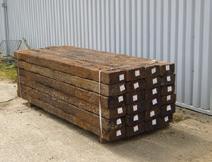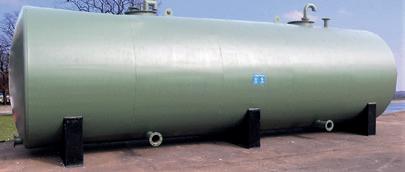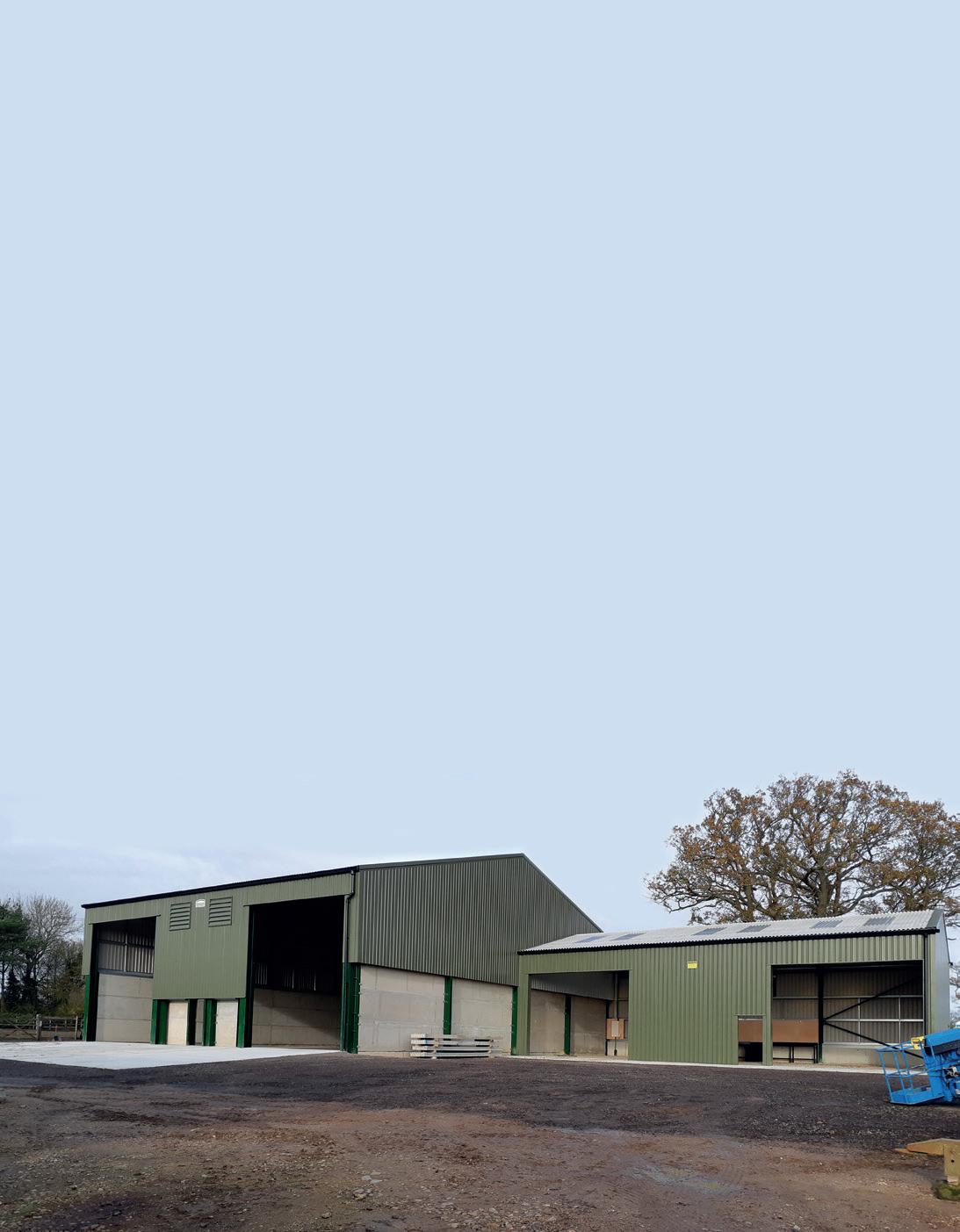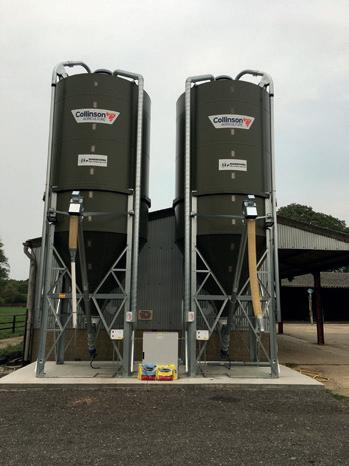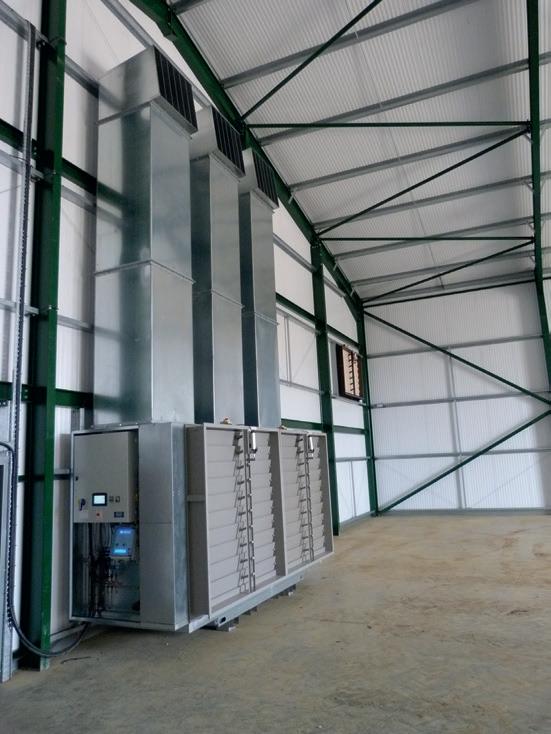
































Editor:
Johann Tasker | T: 07967 634971
E: johann@ruralcity.co.uk
Design:
Mark Shreeve | T: 01502 725839
E: mark.shreeve@micropress.co.uk







Advertisement production:
Polly Coleman | T: 01502 725841
E: polly.coleman@micropress.co.uk
Chloe Miller | T: 01502 725844
E: chloe.miller@micropress.co.uk
Daniel Rice | T: 01502 725858
E: daniel.rice@micropress.co.uk
Mat Roffey | T: 01502 725854
E: mat.roffey@micropress.co.uk
Mark Tait | T: 01502 725803




E: mark.tait@micropress.co.uk
Anglia Farmer is a controlled circulation magazine published monthly for farmers and growers in the eastern counties. To be included on the circulation list, a farmer must have a minimum of 70 acres of land, or 50 dairy/beef stock, or 50 breeding sows/250 growing stock, or 15,000 laying hens/broiler chickens. Intensive horticulture units are required to have a minimum of two hectares.
Subscription is £18 a year (including postage). No responsibility can be accepted by the publishers for the opinions expressed by contributors. If you no longer wish to receive this magazine, please email your name, address and postcode as it appears on the wrapper to adam.gunton@micropress.co.uk
© Countrywide Publications 2022

Published by Countrywide Publications, Fountain Way, Reydon Business Park, Reydon Suffolk IP18 6DH T: 01502 725800

Printed by Micropress Ltd, Suffolk. T: 01502 725800
hen times are hard, a reliable income is more important than ever. That is especially the case this Christmas – not just for for families grappling with the cost of living crisis, but for farmers too.
Ag-inflation has soared during 2022. Rising input costs have been fuelled by Russia’s war in Ukraine, supply chain challenges and the weak pound.
Yes, farm output values have risen too, but in many cases not by enough to offset higher input costs. While some farmers have done well, others have fared badly.
In previous years, the basic payment has cushioned farms against such uncertainty. Payments have been reliable, even if they haven’t always arrived on time.
The phase out of basic payments is a huge challenge. Due to disappear completely by 2027, payments arriving this month will already be 20% lower than they once were.
Defra ministers have repeatedly pledged to maintain the budget for farm support –although the new system of support will require farmers to undertake environmental
work in return for payments, rather than simply filling in paperwork.
The truth is more complex. While payments are being phased out, the environmental schemes due to take their place aren’t properly up and running. No wonder farmers are struggling to replace lost income.
Most producers are keen to deliver environmental benefits. But a survey by the Country Land & Business Association and Strutt & Parker has identified widespread frustration among potential applicants.
When asked why they had not applied, many farmers said payment rates were too low to justify the work required. But they also cited lack of information about the standards they were expected to meet to receive those payments.
If Defra wants farmers to do environmental work, green schemes must be financially viable. Farmers are willing to keep their side of the bargain. It’s about time the government did too.
Johann Tasker Editor
Two men who conspired to steal GPS systems and other technical equipment from farms have been sentenced to a total of of six years and 10 months in jail.
Aidas Cesna, 28, and Gintaras Jankauskas, 30, both admitted conspiring to steal equipment worth £380,000 from agricultural vehicles at 13 farms and estates across Essex between 28 September and 27 October 2021.
Mr Jankauskas was sentenced to three years and 10 months in prison at Chelmsford Crown Court on 15 November. The court also made a deprivation order for his car and he was ordered to pay a victim surcharge.
Mr Cesna was jailed earlier this year at Chester Crown Court for the same offence. He was also jailed for a further one year and six months for a burglary, two thefts and theft from a motor vehicle on farms and estates in Cheshire.

Chelmsford Crown Court heard that technical analysis meant officers were able to place both Mr Cesna and Mr Jankauskas at the scene of 14 thefts of technical equipment from combine harvesters, tractors and sprayers across Essex.


Equipment stolen included GPS kits, navigation systems and satellite receivers, computer screens and control boxes, said PC Samantha Smith, of Essex police's rural engagement team.
















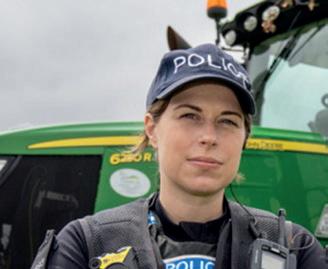
“Global positioning systems are a critical part of modern farming and cost thousands of pounds to replace. Then there are the additional costs and time out of operation required to repair the damage caused by thieves.”
PC Smith added: “Thefts can cause significant harm and disruption to farm businesses, particularly in the
The thefts were investigated by PC Samantha Smith, of Essex Police.
Left: Gintaras Jankauskas was jailed for three years 10 months
autumn, when delays can prove extremely costly for farmers bringing in their harvest.”
Ashley Petchey, of the Crown Prosecution Service, said it took Messrs Jankauskas and Cesna just a few days to carry out the spree of thefts and steal equipment worth more than £350,000 worth of equipment.
“Thefts like these have been terrorising rural communities up and down the country, causing a huge financial loss to hard-working farmers.
“Equipment is not straightforward to replace and, often, machines are heavily damaged in the process, leaving farmers without the essential tools they need to do their job.
“In the face of the evidence collected by Cheshire Police and Essex Police, they pleaded guilty and have been sentenced.”
Farmers are invited to apply for a share of £25m from the Countryside Stewardship Facilitation Fund – which encourages collaborative working to protect and enhance the environment.
The fund supports collaboration between farming groups to improve and create cleaner, greener landscapes. It is part of the Rural Payments Agency’s efforts to support agricultural and rural communities across the country.
Funding allows local farmers, nature groups and charities to give advice and share knowledge on activities such as re-
storing habitats for wildlife and improving biodiversity, creating woodland, improving air and water quality, or restoring historic environments.
Farm minister Mark Spencer (right) said: “By joining forces on shared environmental ambitions, farmers and landowners are able to deliver a greater positive impact on our landscape than they could ever achieve alone.
“This Countryside Stewardship Facilitation Fund is already helping to bring farm-
ers and landowners together for the benefit of nature and the environment, and I encourage farming communities across England to consider applying.”
The Rural Payments Agency is particularly keen to see applications from new and existing groups to deliver large-scale environmental improvements in their local area, create valuable connections and share farming knowledge.
The application window is open until 25 January 2023.
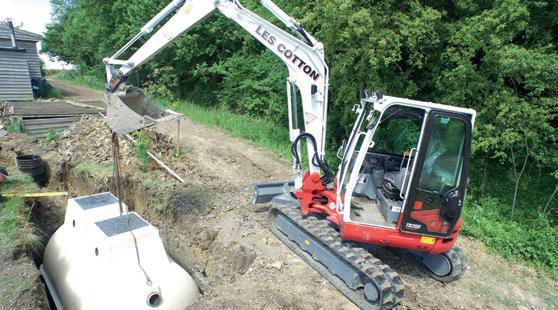


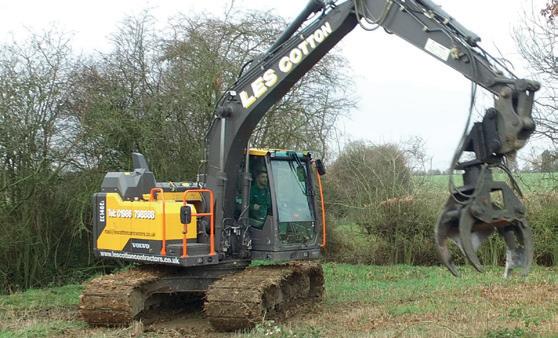
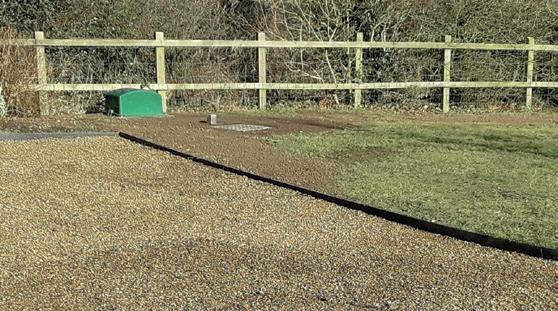
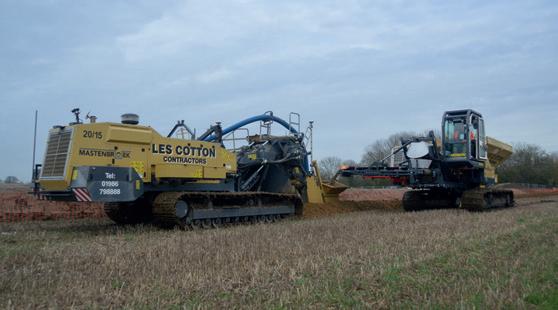


More than £3.2m of machinery was sold at the Cambridge monthly machinery sale last month – the highest grossing monthly machinery sale since February.
Auctioneers Cheffins saw around 2000 lots go under the hammer on 7 November at the Sutton sale ground, near Ely. About half of all machines were sold overseas to 20 different coun tries. It was this was the most success ful sale since February (£3.8m).
Cheffins machinery sales director Joe Page said: “The export market has come back in full force this autumn, as buyers look to make the most of the weakening pound. Trade was strong across all areas.
“As hunting down machinery through out the continent is time-consuming, many of our overseas buyers were heading to Cheffins as a one-stop-shop for machinery and tractors, with many
buying multiple lots to take back to Europe.”
Premium prices were paid for ma chines coming direct from farms, said Mr Page. “Cheffins is one of the only auctioneers to offer full wash-down and certification services, giving buy ers greater confidence to ship items overseas.”
Highlights included a 2011 John Deere 7930 with just over 4200 hours on the clock. It was sold to Canada and achieved over £62,000. A 2012 John Deere 6330 sold for £28,500. Mean while, a 2019 Claas 830 sold to a Dutch buyer for £57,000.
Mr Page added: “Supply chain is sues continue to be the main driver for growing prices for quality second-hand machinery, as backlogs and long lead times have delayed trade-ins for farm ers and caused stock levels to take a nosedive.
“This has led to greater competi tion in the market and ensured that all
quality ex-farm kit is quickly snapped up at auction by either the export mar ket, or domestic farmers and contrac tors.”
The first monthly sale of 2023 is on Monday,16 January, at Cheffins Ma chinery Sale Ground, Sutton, Ely, Cam bridgeshire, CB6 2QT.

This 2019 Claas 830 sold to a Dutch buyer for £57,000.


Plant breeder Chris Guest (above) has been elected chairman of the Agricultur al Industries Confederation (AIC) – the voice of UK agri-supply busi nesses.
Mr Guest is managing director of LS Plant Breeding. Cambridge shire-based, he is an active mem ber of the AIC Board, and brings a wealth of industry knowledge and experience to the role.
“Given the current econom ic and political turmoil, it is par amount that our industry’s voice is heard by Government and oth er relevant bodies with strength and conviction,” he said.
Mr Guest succeeds Angela Booth, director of responsibility at AB Agri, who is standing down.























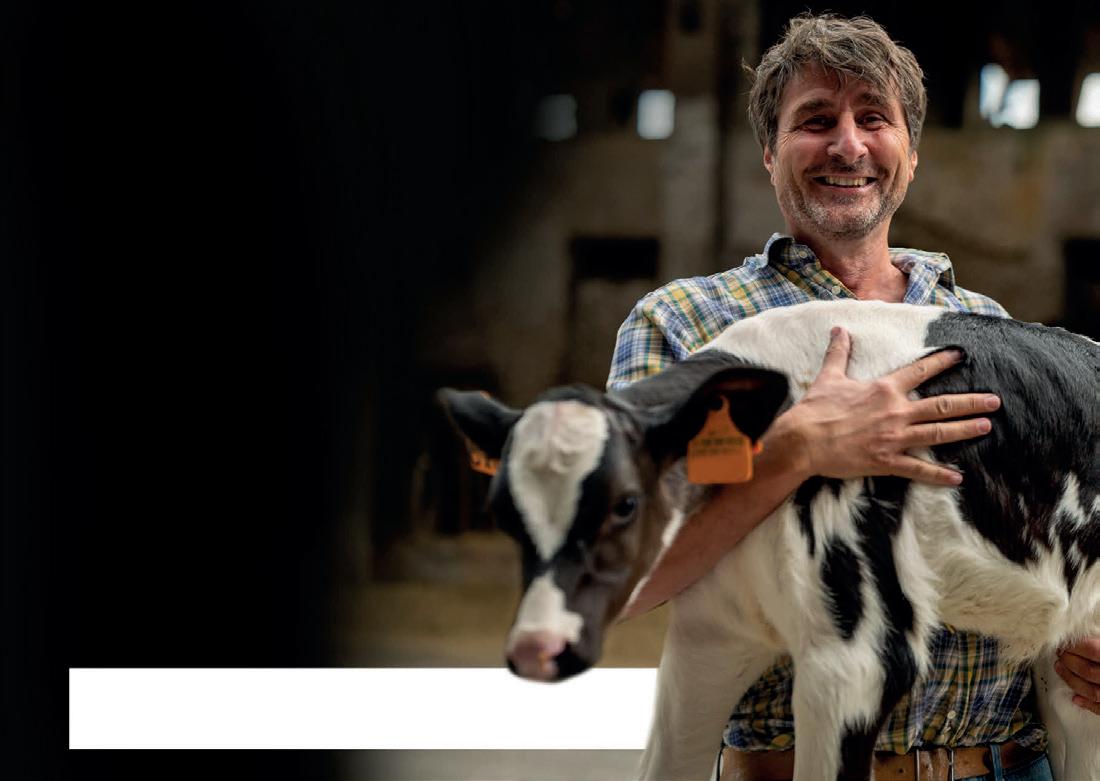


• Favourable conditions buoy planting
• Big increase forecast in oilseed rape

• More winter barley sown, less spring
Favourable autumn conditions have seen a rise in winter crop ping this season, confirms the latest survey by the Agriculture and Horticulture Development Board.
This year’s Early Bird Survey of planting intentions indicates a contin uation in the rise of winter cropping for harvest 2023. These are unsurprising results, given the relatively favourable planting conditions for many growers this autumn.
The survey is carried out each au tumn to assess national cropping in tentions. It is undertaken by the An dersons Centre, with the help of the Association of Independent Crop Con sultants (AICC) and other agrono mists.
“The provisional results of this year’s Early Bird Survey are unsurprising,” says AHDB market intelligence ana lyst Olivia Bonser.
“Historically high global grain pric
less fertiliser to mitigate some of this cost, will be something to monitor go ing forward.”
Despite easing since record highs in spring, for example, UK feed wheat prices have remained historically high, driven by the war in Ukraine and the tight global supply picture, says Ms Bonser.
The intended wheat area for har vest 2023 is forecast almost unchanged on the year at 1,803Kha (-0.1%). The total barley area is estimated down by 1.7% at 1.089Mha, with a drop in intended spring barley plantings out weighing a rise in winter planting.
The winter barley area is estimat ed to be 4.1% higher year-on-year, at
454Kha. This is marginally higher than the 453Kha planted in 2019. If realised, it would represent the larg est winter barley area since 2003
The spring barley area is forecast down 5.4% on the year at 635Kha. This would be the smallest area since 2012 (618Kha). The estimated 2023 oat area sits at 162Kha, down 9.5% from 2022’s estimate (179Kha).
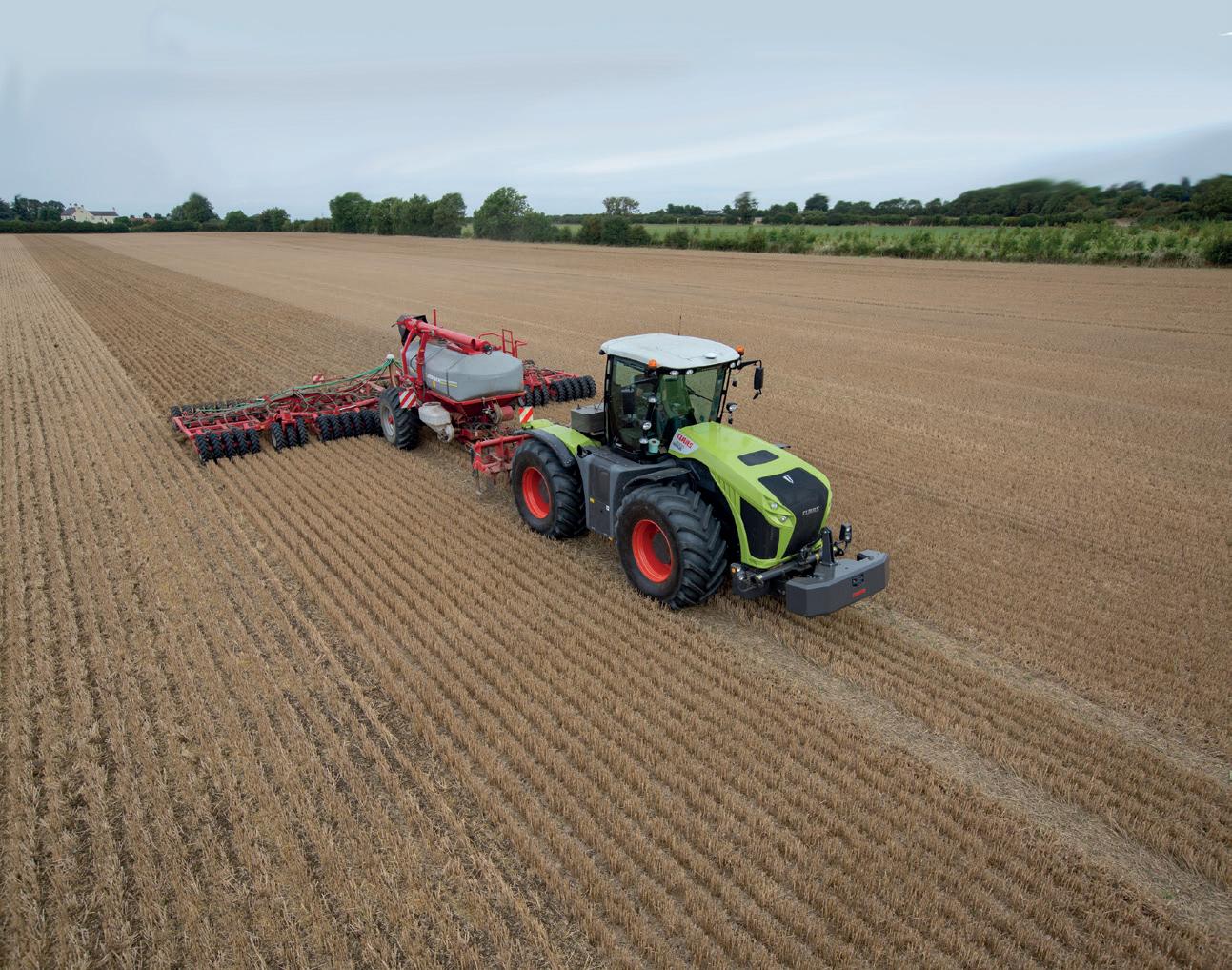
Oilseed rape planting intentions for 2023 are pegged at 415Kha, up by 13.4% on 2022’s estimate. This is a fair ly significant increase on the year, and if realised would be the second consec utive year of area growth.
With UK area information yet to be published for 2022, the data used in this release is the Defra June Sur vey England area, combined with the areas for Scotland, Wales and North ern Ireland from the AHDB Planting and Variety survey.
This year’s survey covered 502Kha and represents the intentions of farm ers across the UK during a snapshot in time. Data was still being collected for these provisional results up to 8 November 2022.
Much more rape went into the ground this summer, suggests the survey
The oilseed rape increase is significant
“
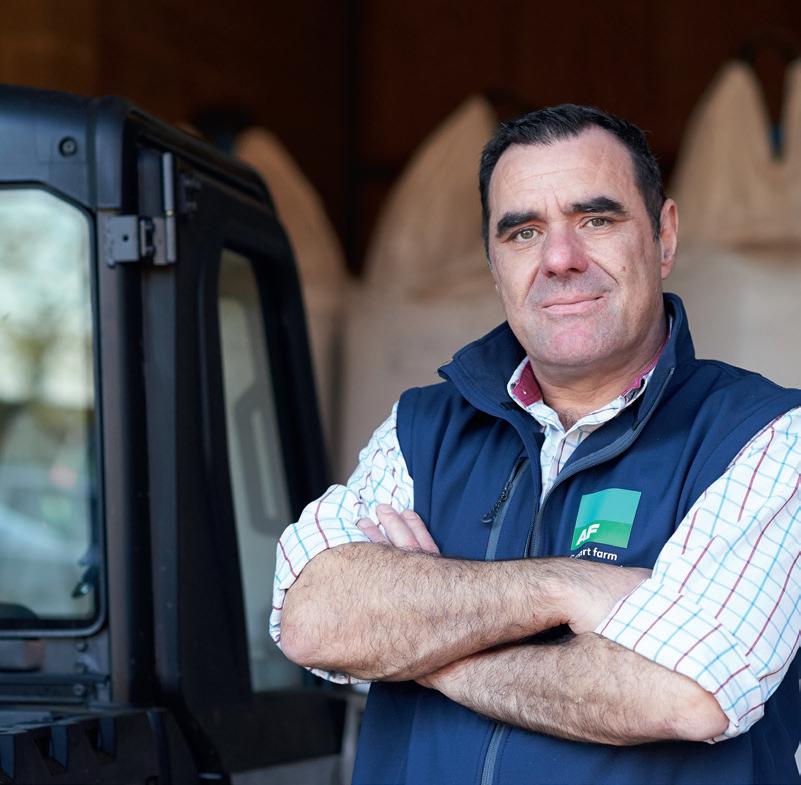
The role of precision technology in sustainable farming was the focus of the Agri-EPI Centre’s annual conference, at John Pawsey's Shimpling Park Farm, near Bury St Edmunds.


The event brought together more than 100 guests from across the agri culture sector. They included farmers and growers, technology developers, academics and other sector represent atives, for a day of discussions and net working.
The Pawsey family have farmed in Suffolk for four generations. Mr Pawsey started farming at Lavenham Lodge Farm in 1985 with his grandfa ther. He now farms entirely organical ly on his own home farm at Shimpling Park and for neighbours.
Primarily an arable business grow ing combinable crops, with some re cently planted agroforestry, livestock were re-introduced to the farm in 2014 in the form of New Zealand Romney sheep to recycle nutrients.
Mr Pawsey told delegates that pre cision technology had a key role on his farm – savig time and money with a Skippy Scout drone, which is monitor ing three key crop trials.
“Even though we can actually phys ically look at [things in the field] our
you have a drone that can go out and get it for you, then why wouldn’t you do that?”
Three new trials are being conduct ed for harvest 2023 – two for other people and one for Mr Pawsey's own farm. This trial is looking at seed rates and the effect of reduced cultivations, weed suppression, disease, row spac ing, quality and yield.
It is comparing the performance of different winter wheat populations of 250 and 325 plants per square metre. It is also comparing the performance of different plant populations in a bicrop of winter beans and wheat.
Each assessment spot is monitored by the drone at regular intervals, count ing the plants and identifying weedy areas.The aim is to understand the ef fect of fewer cultivations with higher seed rates and vice versa.
“In addition, we want to understand the effect of higher plant populations and the suppression of weeds, the ef fects on tiller numbers and disease on a wide row spacing, and finally qual ity and yield.”
Agri-EPI chief executive Dave Ross said: “There’s nothing better than actu ally meeting people face to face to dis cuss topical problems and think about solutions to those problems.”
Fabia Bromovsky, director of the Global Farm Metric at the Sustaina ble Food Trust, said technology was the future for data collection. There need ed to be more focus on data protection and how data could be shared secure ly between consenting users.
Other farmer speakers included Jo Franklin from Kaiapoi Farm (Hert fordshire); Sophie Alexander from Hemsworth Farm (Dorset); and Ian Beecher-Jones from JoJo’s Vineyard (Oxfordshire).
They discussed the challenges within the agriculture sector including resil ience to weather events, net zero goals, and price volatility, and how uncertain ty in policy can affect the ability for some farmers to innovate as much as they would like to.
Other topics included how sustain ability is inextricably linked to profita bility, the need for a business mindset as a farmer, and methods to improve sustainability.
The Agri-EPI Centre is the UK cen tre for precision innovation in farm ing. It helps deliver profitable solutions that encourage more sustainable farm ing by bringing together technology experts across agriculture.
A panel discussion centred on ways to make technology accessible to farm ers, how to better understand farmers’ priorities for innovation, and how tech nology can help attract more new en trants into agriculture.
“We are in an industry that has huge challenges and huge opportu nities,” said Agri-EPI chief executive Dave Ross.
Above right: Delegates went o a farm walk
Below: The main conference area
If you have a drone, why wouldn't you use it?
“
Increased flexibility
Mayflower has a wider, more flexible growing window than its competitors.
When grown as a milling wheat, it consistently achieves the 13% contract specification of protein with a specific weight of 78.5kg



Less inputs and passes means fewer litres in the tank.

Excellent disease package with a Septoria score of 8.4, as well as Soil Wheat Mosaic Virus and PCHI to Eyespot.



This season choose the lower input variety. It could just deliver a higher impact on your bottom line. Speak to your seed merchant today about availability.
Recent trials prove when N levels are reduced, Mayflower’s relative yield increases compared to other established varieties.
elsoms.com
When everything’s going up, it pays to bring your costs down.


Limagrain varieties scooped two priz es at the Suffolk Agricultural Associ ation’s annual Farm Business Compe tition, presented at a special awards dinner.
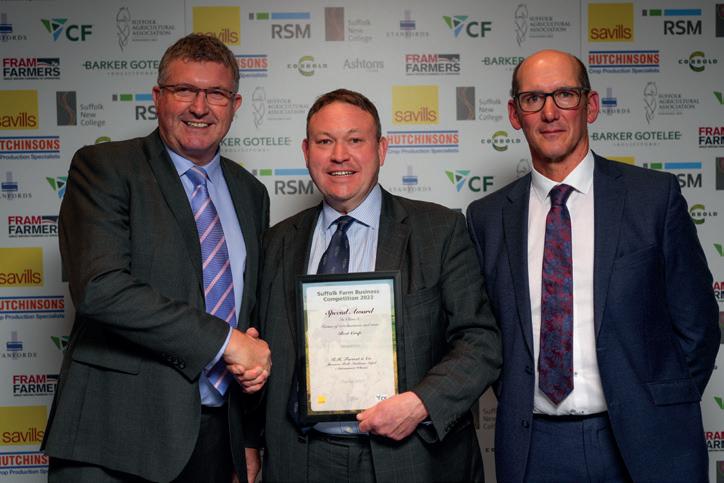
The competition recognises Suffolk's best farms in three size categories: Class 1 (farms up to 250ha), Class 2 (251-500ha), and Class 3 (501ha or more). Awards across four main categories include Best Crop, Conservation, Livestock and Diversification.
Limagrain took first place in two out of the three size classes within the Best Crop award. Winner in Class 1 was a crop of high-yielding Group 4 LG Skyscraper, grown by Roy Stew ard, at ACC Green, Red House Farm, Bad ingham, Woodbridge.
“The Skyscraper looked well all year, was not over thick and is a good all round varie ty,” said Mr Steward.
Competition judge William Faulds said:
“I have seen a number of very good-looking crops of wheat over the competition, and in general. But LG Skyscraper stood out – in both first and second wheat scenarios.”
The Best Crop award among the larger Class 3 farms was a crop of Group 3 soft mill ing variety LG Astronomer, grown by James Forrest, at RH Forrest and Co, Mowness Hall, Stonham Aspal.
“It’s always very difficult to decide which is the best crop of wheat,” said Mr Forrest.
“The LG Astronomer grew well and yield ed well too at over 11 t/ha. It was grown as a seed crop and we’re growing it again com mercially this year. It also produced a decent sample at 80 kg/hl.”
Suffolk Show 2022 president David Barker said: “The farms reflect some of the best crops grown in the UK, and for two Limagrain-bred wheats to feature was a tribute to the remark able plant breeding taking place at Woolpit in Suffolk.”
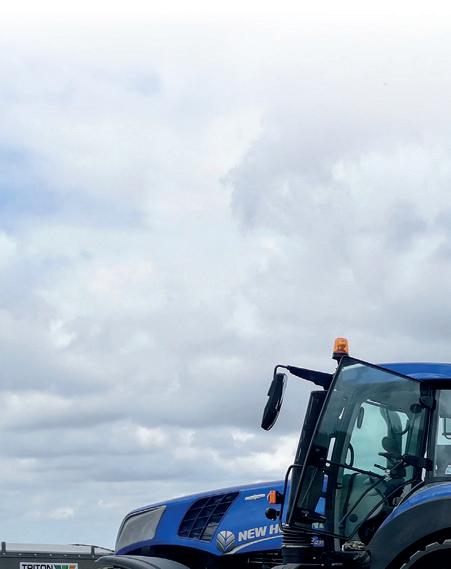
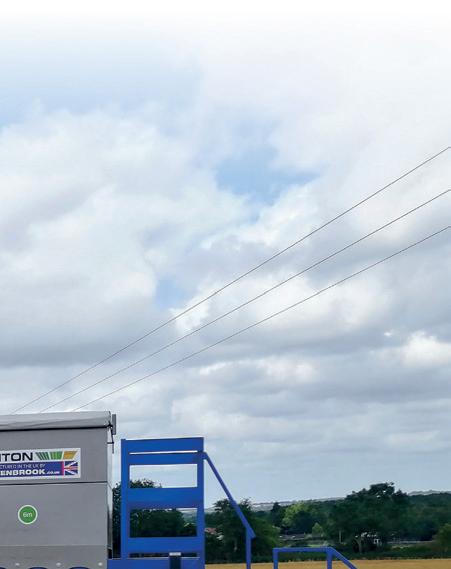

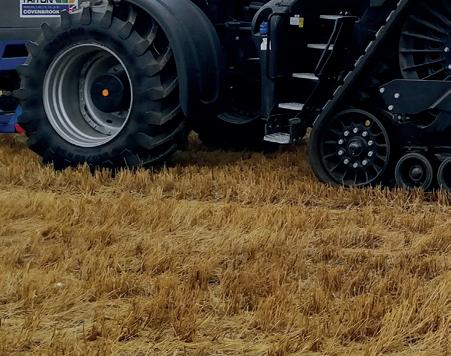


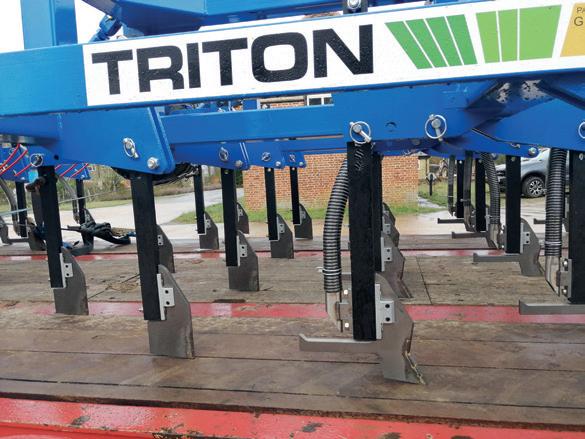


Soaring energy costs and a shortage of people to harvest crops are a serious threat to the future of the UK fruit and vegetable industry, says the NFU.
Farm leaders issued the warning in the run-up to Christmas, reiterating the need for access to affordable energy and a skilled and secure workforce amid ongoing concern over high fertiliser and energy costs.
A new report, prepared by Promar International, has found that growers’ cost of production has increased by as much as 27% in the past 12 months Products such as tomatoes, broccoli, apples, and root vegetables most affected, says the study.
Despite food inflation at record highs, growers are not achieving the returns needed to run sustainable, profitable businesses. There are also concerns over energy prices when the government’s six-month price cap ends next year. Industry leaders say this means the situation could yet get worse for British growers.
NFU horticulture and potatoes board chair Martin Emmett said: “The UK horticulture sector is ambitious, innovative, and strives to be the best in the world, producing iconic products like strawberries, apples, and asparagus.”
He added: “Despite challenging po-
litical and supply chain pressures, it has long held an ambition for growth, matched with government’s ambition for UK horticulture as set out in its National Food Strategy.”
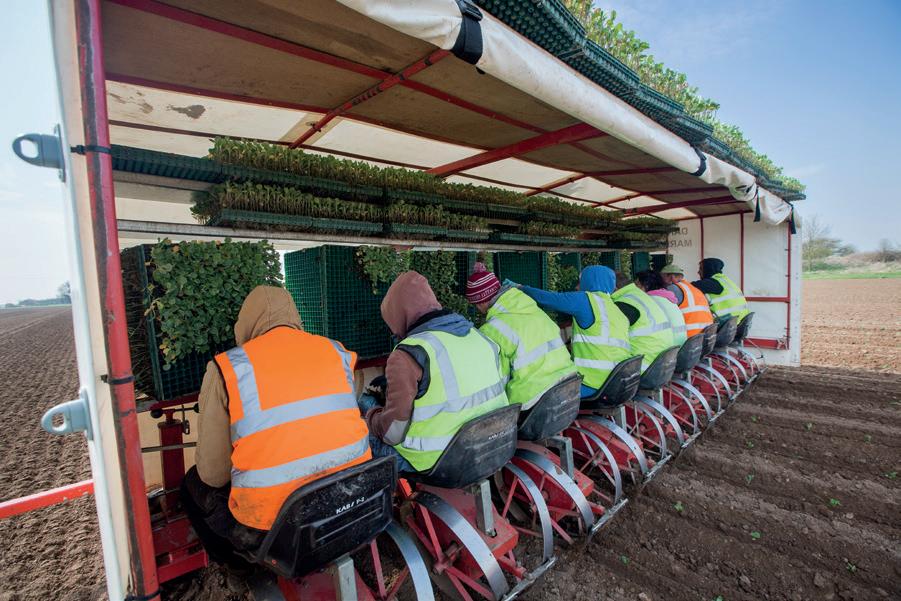
The continued lack of a reliable workforce, both in permanent and seasonal roles, combined with sharply rising input costs, particularly for energy, had put many businesses on a knife edge, said Mr Emmett.
“Producers of high energy crops in particular, such as top fruit, root vegetables and crops grown under glasshouses, have severe doubts about their business viability,” he said.

“Growers are doing everything they can to mitigate the impacts.”
Farmers could not succeed alone, said Mr Emmett. "If this pressure continues, it will be simply unsustainable for some businesses to continue as they are. In these unprecedented times, stability and confidence are critical."
The NFU has been in contact with the Groceries Code Adjudicator to ensure it is aware of the pressures growers are under. It says it has also highlighted unfair buying tactics and practices many of growers face during discussions with retailers.
“It’s critical that UK businesses can have constructive dialogue with their customers about the pressures they are facing. To safeguard the future of British fruit and vegetables, we need sustainable farm gate prices.”
The NFU also wants an increase in visas issued under the seasonal worker scheme. It says recognising agriculture and horticulture as a vulnerable sector in terms of energy security would also ease the pressure.




















































































Aspring barley variety that combines high quality with consistent yields is being launched to feed barley growers.
SY Splendor, from Syngenta, was bred for the malting market. Although it was withdrawn from malting tests, it continues to offer useful features that could appeal to feed barley growers, says Syngenta marketing manager Kathryn Hamlen.
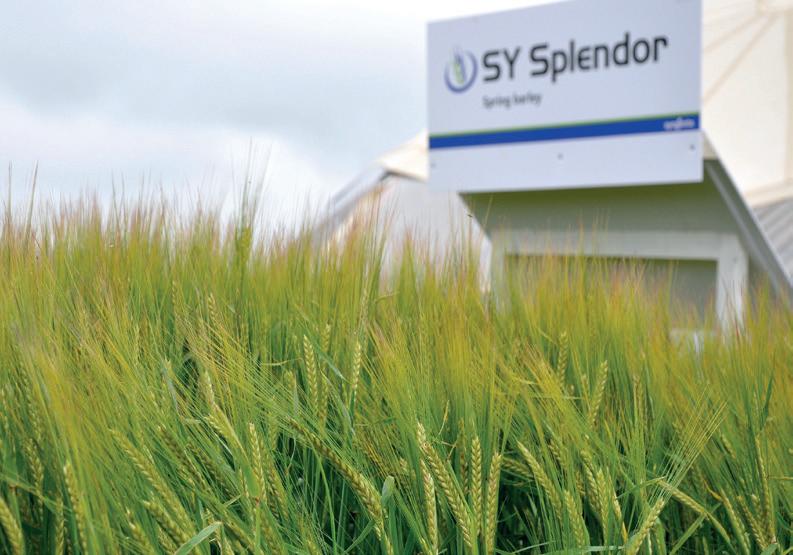
Uppermost among these traits are its consistent treated yield of 102% of control varieties across all regions on the 2022 AHDB spring barley Recommended List, says Mrs Hamlen. Splendor also has a high specific weight of over 68 kg/hl.

But the variety offers other characteristics useful in certain grass weed situations. “Spring cropping is a wellknown way of reducing grass weed populations because it gives growers more time to remove an extra flush of weeds before planting."
On top of this, spring barley is a
competitive crop and therefore has more effect in suppressing grass weeds. Other desirable traits are its vigorous growth habit and stiff straw with good brackling resistance.
“Early vigorous growth helps a variety to better compete against grass weeds from the beginning of the season – allowing good plant establishment before the grass weeds get a chance to compete.”
Stiff straw helps later in the season if grass weed populations are higher –as it can help the crop to better withstand grass weeds pulling it down, adds Mrs Hamlen.
“Meanwhile, specific weight is a stable characteristic, which means if you choose a variety that starts with a high specific weight, it will help to mitigate against the competitive effects that grass weeds have for reducing crop grain-filling.

“It is precisely because SY Splendor





was originally developed as a malting variety that it has such a good specific weight,” says Mrs Hamlen.
The feed sector accounts for about 20% of the UK spring barley market.








Afacility using gene-editing technol ogy to improve quality, resilience and sustainability of vegetable crops has opened at Warwick University.
The Elizabeth Creak Horticultural Tech nology Centre is a £1.5 million facility which will use cutting edge techniques such as gene-editing to improve vegetable crops. It includes the state-of-the-art contains Jim Brewster Laboratory.
Researchers will address issues relating to disease resistance, crop yield, adaptabil
to harness the rich resources of the UKVGB – including by gene-editing.

Murray Grant, Elizabeth Creak chair in food security at Warwick University, said: “We have a pressing need to grow and harness Gene-editing

The centre will also train future research scientists in vegetable tissue culture and
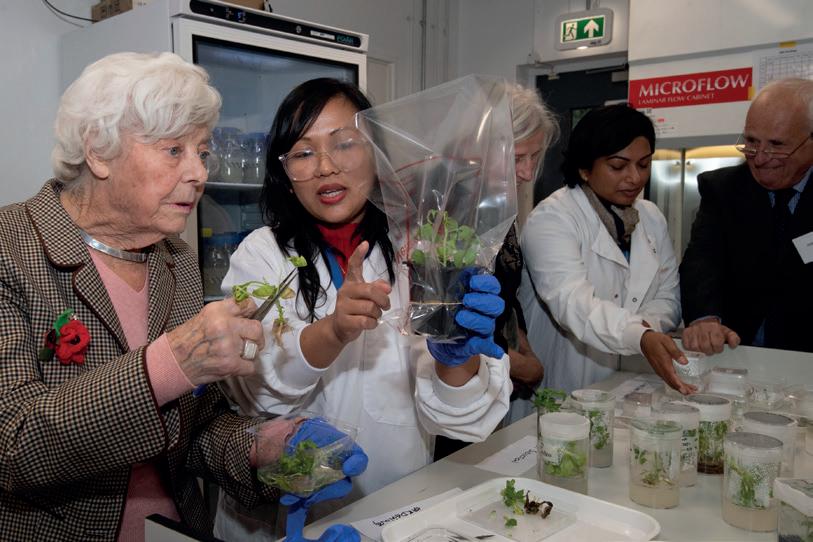
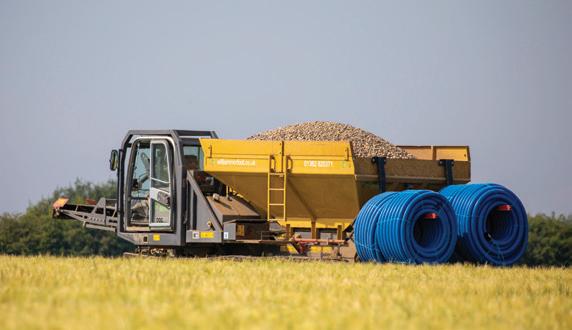





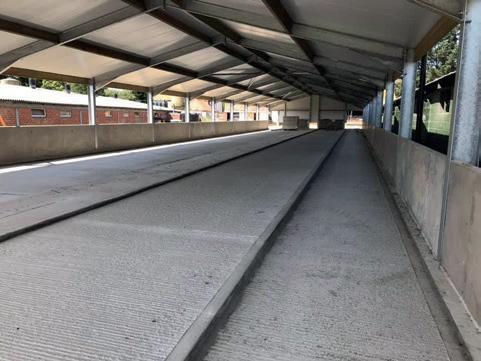
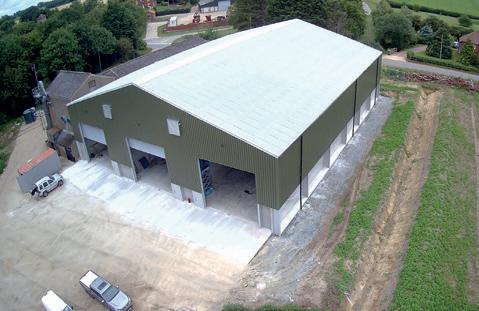


Amove to de-risk a large arable business has resulted in a machinery fleet that offers flexibility and a reduced long term cost of ownership.
Farm manager Jeremy Durrant runs a streamlined machinery policy E W Davies in Thaxted, Essex. It is adapted to fit the needs as the 800ha cropped area has changed according to the business’s priorities.
Mr Durrant has run a mix of machines on both hired and owned agreements. But has found that his most recent approach – based on long term warranties backed up by the reliability of the Fendt tractors he runs – allows a low cost per hour return than

some of his previous arrangements.

The fleet includes three Fendt machines, a 2014 Fendt 828 that came to the farm as an ex-demo machine, a 2018 Fendt 724 bought to run a trailed sprayer, and the recent acquisition of a 2019 Fendt 942, that replaced a CaseIH Quadtrac.
Mr Durrant says his aim is to fix the farm’s machinery costs over a longer period, avoiding surprises with repairs and servicing. The 724 model has an
eight-year, 8,000-hour warranty agreement. Mr Durrant says this affords him the opportunity to know his costs for that machine across a longer period.
“I believe Fendt tractors are the cheapest tractor you’ll ever run, but to fully appreciate this, it means considering everything that is associated with running and owning a tractor to work out the cost of ownership.
ads.qxp_Layout 1 16/05/2019 09:06 Page 16
“If you look at purchasing a tractor in isolation then it may look more attractive to run other brands, but this doesn’t consider the full ownership cost.”
Fuel, insurance, labour, depreciation, along with servicing and repairs
Continued on page 22
Running two drills instead of one means flexibilty.
Freephone: 0800 328 5492 Email: sales@allertonuk.com Website: www.allertonuk.com
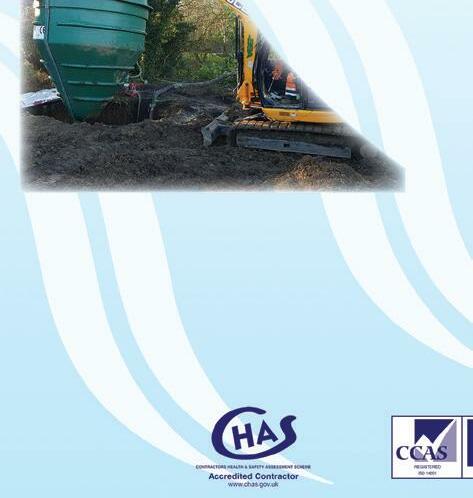
In rural areas without a mains drainage system, and where septic tanks will no longer reach environmental standards, Allerton can provide the ideal solution.
Trading since 1974, Allerton are leading specialists in efficient treatment systems. They pride themselves on their individual, problem solving approach to dealing with alternative means of treating and disposing of raw sewage.


The Allerton ConSept converts your existing Septic Tank or Cesspit into a fully functioning Sewage Treatment Plant.
The Diamond Sewage Treatment range is suitable for either individual homes or small population applications
When Gravity Drainage is not possible choose Allerton Pumping Stations for Sewage or Dirty Water
Servicing & Maintenance on a wide range of Sewage Treatment Plant and Pump Stations by BRITISH WATER ACCREDITED ENGINEERS.
Rising fuel and labour has pushed up costs.
“







are factored into Mr Durrant’s costings to give him an accurate figure. His cur rent 724 costs £37/hr to run, where as the 828 is £50/hr. The largest 942 is £84/hr, but he is keen to stress that these figures have been severely im pacted by economic pressures.
“The rise in fuel and labour has
“
pushed these costs up. Five years ago, when we were running a Case Quadtrac, it was costing us £55/ha. This is because it was pulling wider machinery but used more fuel to do so. Since then fuel has doubled and labour is more expensive, so it isn’t a fair comparison.”
“Looking at the reduced risk we now have as a business, all three machines can operate virtually every implement, whereas when we ran one large trac tor and a 12m drill, nothing else could pull the drill or cultivators, so we were heavily reliant on one machine. When it was a wet autumn in 2019, we real ised this approach didn’t spread our risk wide enough.”
The change to the 942 also coincided with the Quadtrac reaching five years old and gave Mr Durrant the chance to alter his implements to benefit the wider fleet.
“Our farm is predominately heavy clay and we have operated a 12m CTF policy for many years, however we now
run two 6m drills to offer flexibility both in machinery and operation.
A big change to the business came in 2018 when the farm added an extra tractor to the owned fleet to offset the fluctuations that can be experienced when hiring machines. Historically, the farm hired in two tractors for 20 weeks to cover harvest and drilling.
“One variable cost I wanted to re duce was the tractor hire cost in the summer. As a business we needed to offset the inflation in the industry and that meant being able to fix all the costs within our control.”
The change also coincided with the switch to a trailed sprayer from a self-propelled, which meant an in creased workload for the tractors and further justification of the purchase.
With the steep increases in fuel and labour experienced recently, the deci sion to fix the costs of the 724 over an eight-year period are more than stack ing up across the tractor’s 1,200 hours per year mainly spraying workload.
“The hire cost for a 20-week peri od is now more than the cost of run ning the 724 for a whole year, which is quite staggering, and total justifica tion of our decision.
"Our dealer Crawfords tailored the package to meet our needs and fix the costs for a longer period. It also allows us to have another tractor around the farm for jobs throughout the year.”
Of the three Fendt machines, the longest servicing is the 828, which arrived on the farm in 2014 and has now clocked just shy of 8,500 hours. It is out of warranty, but still deemed es sential, clocking around 1,000 hours per year on a variety of task from drill ing to muck spreading.
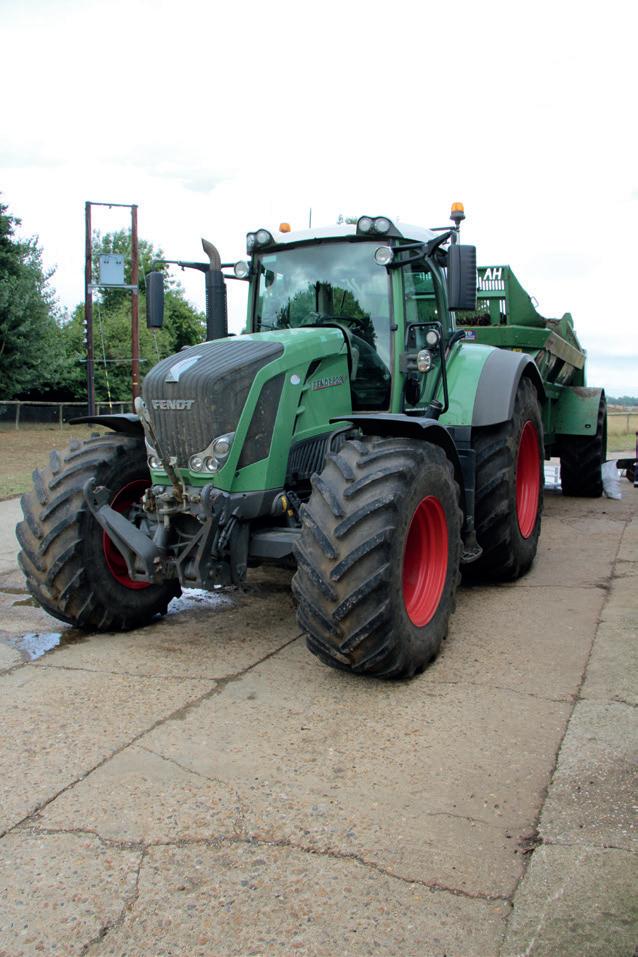
A key factor for running it longer was the reliability it has offered over its lifetime and Mr Durrant hinted that he could count the number of times a service van has been out to his fleet on both hands.
“Our replacement policy is a flexi ble one and when the 828-warranty ex pired, we had just purchased the 942, which took a bit of pressure off the 828 as the frontline wheeled machine.
“This is the only tractor we don’t have fixed costs for now, but it doesn’t owe us anything, so we view the risk as a manageable one and I’m confi dent to run it for another season be fore changing.”
Running Fendt equipment has al lowed the farm to reduce the risk of machinery ownership and operate at lower costs. Mr Durrant says the reli ability and low cost of ownership will keep him running Fendt tractors.
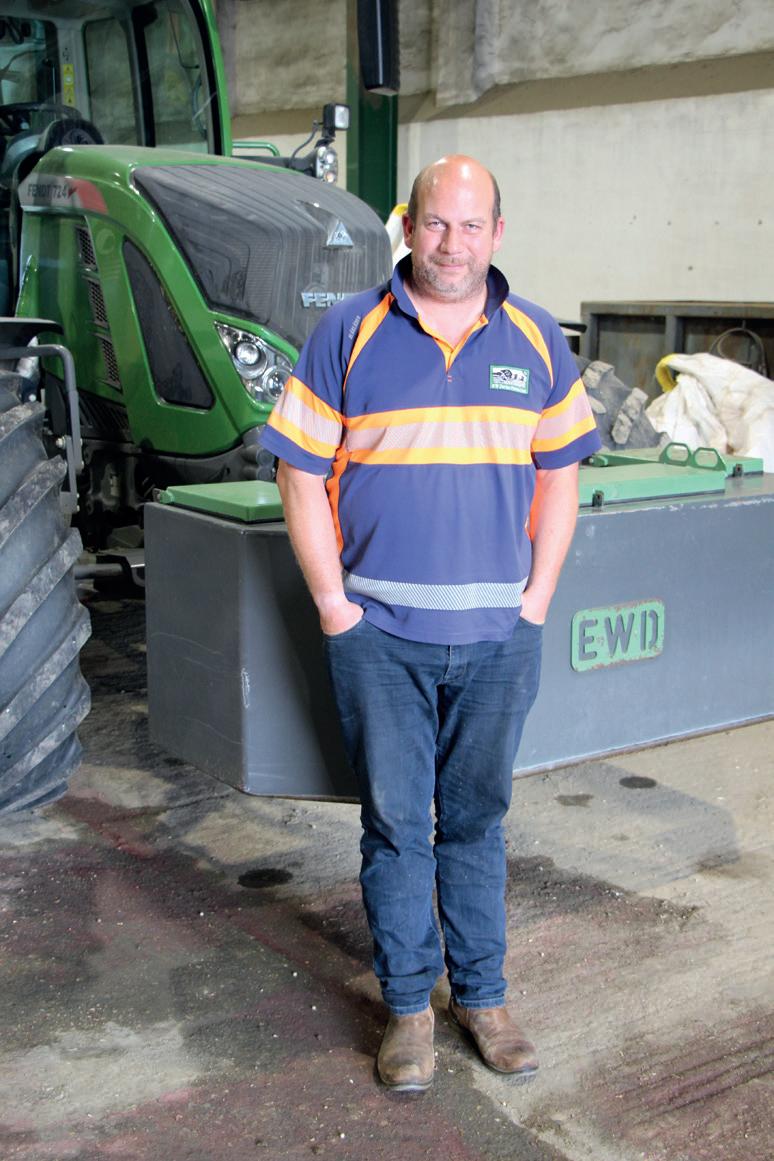
says running Fendt tractors has helped reduced his risk.
Left: Avoiding surprises with repairs and servicing is a key goal
The CROPSENSE system has been completely redesigned with user interaction, remote accessibility and intelligent power efficiency at the heart of the design.
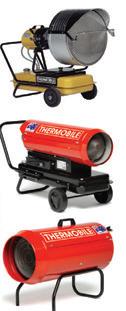




















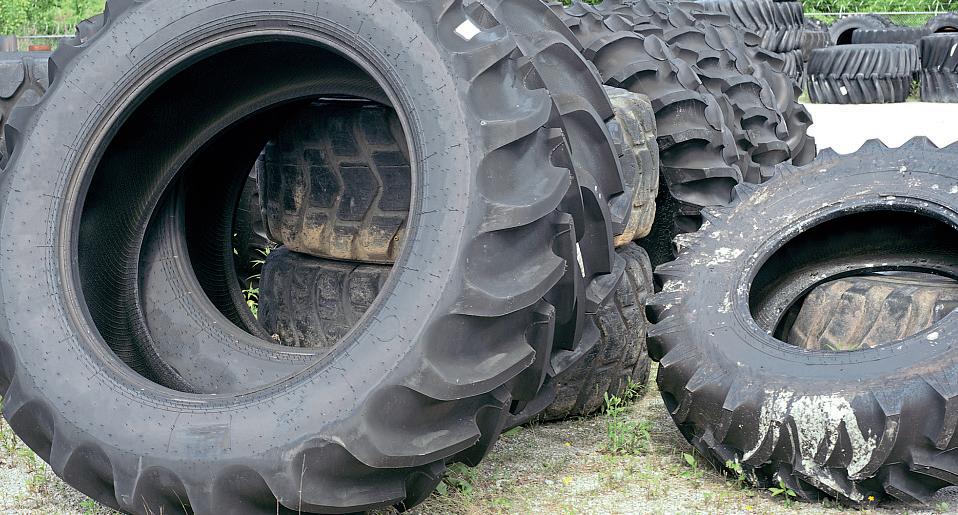








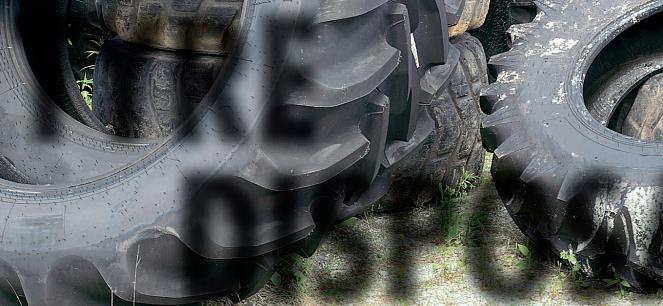























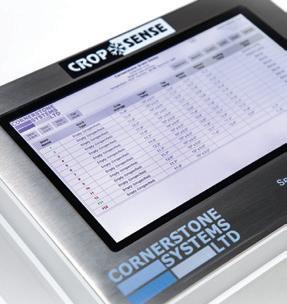













Designed and built in the UK, Cornerstone Systems offers the full package using our own engineers. From design and build, through to installation and long-term servicing of your CropSense systems. We even offer customisation of systems to meet your specific requirements.


servicing of your CropSense systems. We even offer customisation of systems to meet your specific requirements.




Key Features and Benefits:


Key Features and Benefits:
Robust Design and Manufacture
Robust Design and Manufacture
Full System Remote Accessibility

Secure, Full System Remote Accessibility
Automated Email and Texts

Full Turnkey Solution
Intelligent Control for Power Efficiency
In-House Customisable System Software
Integral Monitoring, Control and Data Storage


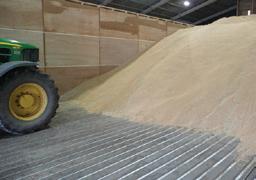
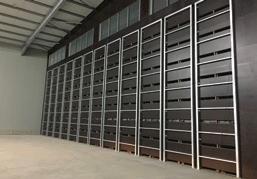
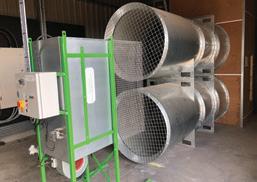



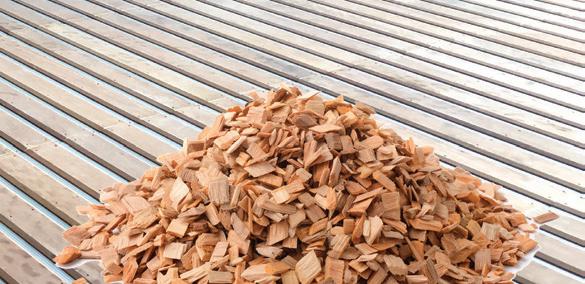




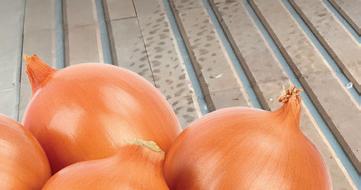






ANorfolk arable farmer is using miscanthus to square off awkwardly shaped fields, in a move he hopes will bring multiple benefits.
Algy Garrod, from Manor Farm in Bintree, planted the crop after learning about its environmental credentials. “My neighbour put miscanthus on some small fields next to waterways, which got me thinking I could use it to take out some less productive land.




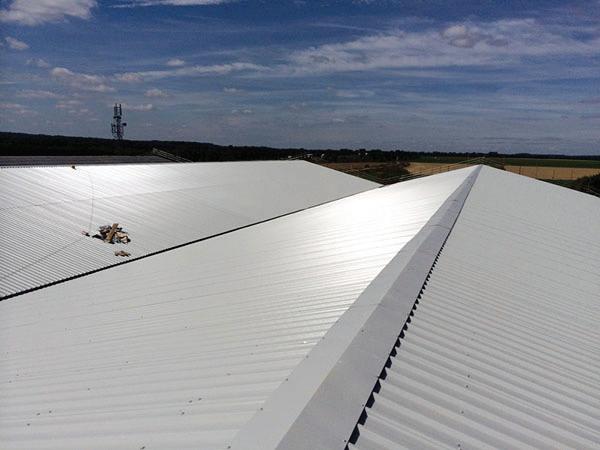

“Certain areas of the farm perform poorly on an annual basis – typically areas on the edges of fields. So I made the decision to put Miscanthus on them. I’ve straightened out these fields with GPS, taking out bits near hedges or bendy field margins and edges.”

Mr Garrod has planted 10ha of miscanthus and hopes squaring off the fields will make
them more manageable for food production.



“There may well be some reduction in yield and I'm not suddenly expecting the miscanthus to be an amazing crop next to a hedge. But I’m not putting inputs on and I’m not running on it, so I’m hoping that having taken those out of the equation it will give me a return.
“I’m also hoping it will provide me with some efficiency gains – my sprayer works better when it's going in a straight line as opposed
to going round corners which creates inaccuracies when applying our inputs.”
Additionally, the miscanthus is providing some valuable game cover. “I’ve now got permanent shooting cover which means I don’t have to establish it each year, which is a big benefit,” says Mr Garrod.
As the miscanthus is still in the establishment phase, it’s too soon to tell if the decision to plant it has paid off financially. “We have no idea what the miscanthus will yield yet as we are only in years two or three, but by year five we will have a better idea.”
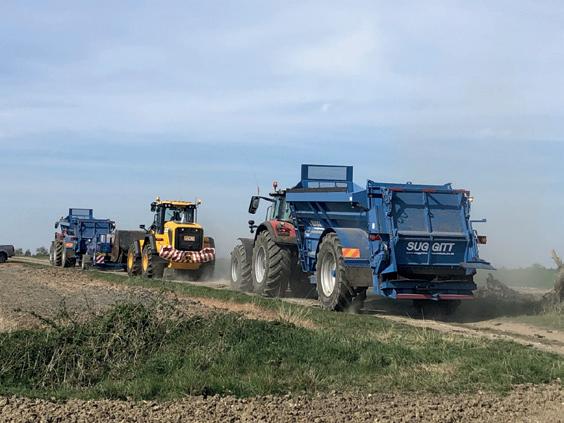
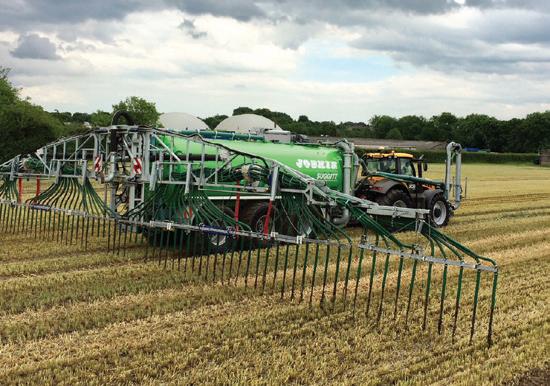









Livestock producers have continued to re duce their on-farm antibiotic usage, con firms the latest progress report – helping to combat anti-microbial resistance.
UK antibiotic sales for livestock have fallen by 55% since 2014, says the report, published by the Responsible Use of Medicines in Agriculture Alliance (RUMA). The decline – to 28.3 mg/kg –represents the lowest sales to date.
The report covers ten sectors across aqua culture, pigs, poultry and ruminants. It builds on the successful implementation of targets re leased in 2017, which helped to halve sales of an tibiotics to treat UK farm animals.
RUMA chairman Cat McLaughlin said: “I continue to be impressed by the commitment of farmers, vets and everyone in the food sup ply chain, and I'm full of praise for the work of UK agriculture in its efforts to tackle anti-mi crobial resistance.”
The global pandemic, Brexit, rising input costs, ongoing labour shortages and other supply chain issues meant animals were remaining on farm longer than usual, said Ms McLaughlin.
The cost-of-living crisis had also made for chal lenging conditions right across UK farming. For
ed and focused when it comes to addressing the challenge of anti-microbial resistance and has not wavered in its commitment.”
In response to specific disease outbreaks or other factors, some farm sectors had seen some increases in usage to effectively address these challenges and protect animal welfare, said Ms McLaughlin.
“This reinforces the point that antibiotics are a vital tool to ensure healthy animals and high welfare standards. The focus is not on zero use, but responsible use. All sectors continue to strive to keep antibiotics effective and fit for purpose and only used when necessary.”
Industry initiatives and tools were supporting the responsible use of antibiotics. They included the Medicine Hub and electronic Medicine Book for Pigs, both developed by the Agriculture and Horticulture Development Board.
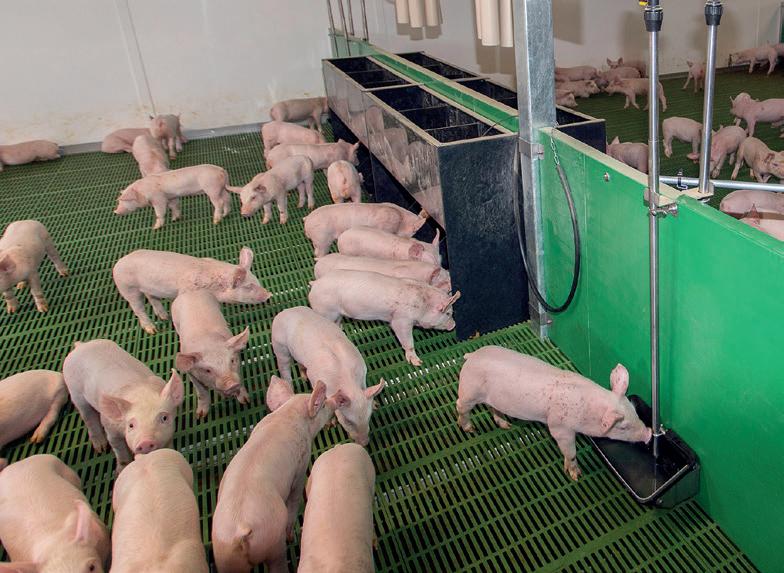
“Successes to date across the industry have put the UK ahead of most food producing EU countries – and the current RUMA targets up to 2024 further reinforce the ongoing commit ment across all the sectors to achieve sustaina ble reductions."
Veterinary Medicines Directorate chief exec utive Abigail Seager praised the collaborative riculture. The continued progress was something
The NFU is calling for Defra to use its statutory pow ers to provide much need ed support to egg producers whose livelihoods are under threat.
The union wants Defra to in vestigate whether an “exceptional market conditions” should be de clared under the Agriculture Act 2020, given the severe disruption which egg producers and UK con sumers are experiencing.
Such a declaration would enable support to be made to producers.
NFU president Minette Bat ters said: “There is a huge range of issues facing the poultry sector, in particular within the egg sup ply chain, which have built up over months and which we have been warning of for some time.”
Energy price inflation and supply chain disruption have added to the worst outbreak in Avian Influenza yet, said Ms Batters. But these pressures alone could explain why supermarket shelves were empty.
“The NFU raised concerns about the functionality of the sup ply chain with Defra a number of months ago in the hope of avoid ing the situation we have now, with some retailers having to limit UK consumer access to eggs.
“This is surely a prima facie case of severe disturbance to an agricul tural market. It is critical that De fra acts now to investigate the is sues in the egg supply chain so that any declaration under section 20 can be made as soon as possible.
“Poultry and egg producers must have the confidence they need, working within a fair and trans parent supply chain, with fair re turns for farmers, so they can do what they do best – meet demand from shoppers for quality British eggs and poultry meat.”
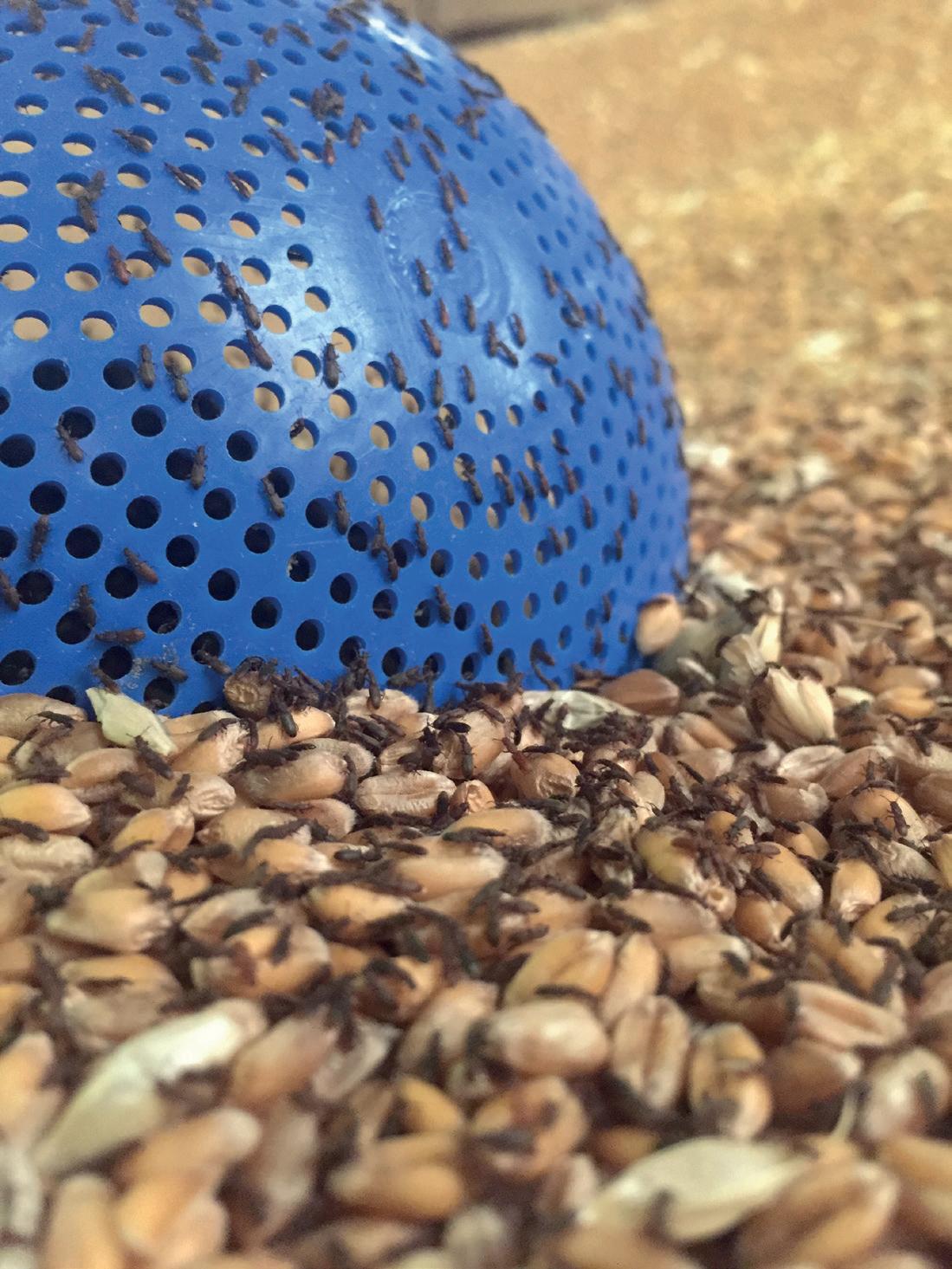
Results from veterinary practic es across the UK suggest My coplasma bovis is more wide spread than previously thought.
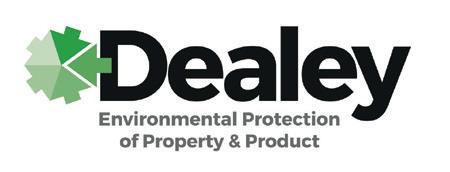
A new surveillance programme in dicates M. bovis affects beef and dairy cattle across the country – although it can be easily detected through bulk milk serology testing, which the results suggest are more sensitive than other forms of detection.

ed that M. bovis is more prevalent than expected,” says Graeme Fowlie, of Meadows Vets. “From working with vets across the country taking part in the surveillance programme, it’s be come clear that that is the case.”
across England, Scotland, Wales and Northern Ireland, show that M. bovis is present in every region, in both beef and dairy herds.
so you should be aware of it.”
The disease causes pneumonia, mastitis, swelling, sore joints and oti tis., It is also likely responsible for a range of chronic underlying health is sues, which have a significant impact on welfare and productivity.
As part of the surveillance pro gramme, vets were offered free M. bo vis tests, regardless of whether herds were showing signs of disease or not.
screened via bulk milk serology. Sick animals can be identified with PCR testing of either nasal swabs, post mor tem material, joint fluid or milk sam ples.”
Since he started using these tests two years ago, Mr Fowlie has returned more positive samples than in the previous 20 years. Some of these would have been false negatives when using traditional bacterial culture
Farmers should adopt stringent biosecurity measures with careful herd management changes and vac cination where appropriate, says Mr Fowlie. Vets can now prescribe a mul ti-strain vaccine in the UK under the


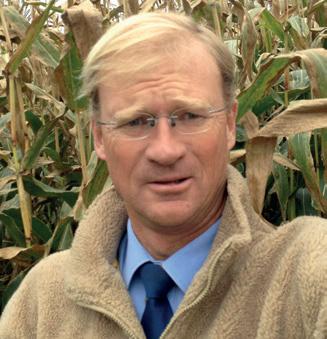




Agronomy firm ProCam has ap pointed Simon Montgomery (right) as technical team leader for its Field Options division.

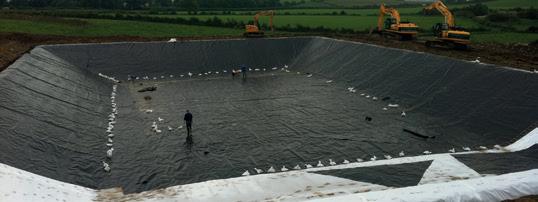

Set up in 2004, Field Options markets a range of forage seeds –including grass mixtures, maize, fod der beet, and wholecrop forage mixes –as well as seeds for environmental schemes, green manures and game cover.
Other services include forage planning advice and supplies of specialist fertilisers, silage inoculants and crop protection agrochemicals to UK farmers.
Mr Montgomery joins Field Options following the retirement of technical director Francis Dunne.
He was previously at Nickerson Seeds where he spent the last 14 years as a seed specialist. Before this, Mr Montgomery farmed in Zimbabwe, working in the dairy and beef sectors. He grew crops including forage and seed maize, soyabeans, groundnuts, field beans, sun flowers, tobacco, wheat and grass.
He will be responsible for bringing Field Options and ProCam closer together to deliver a better customer ser vice. He holds an MBA in agriculture and food indus tries from the Royal Agricultural University.
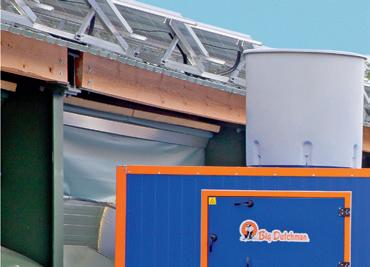
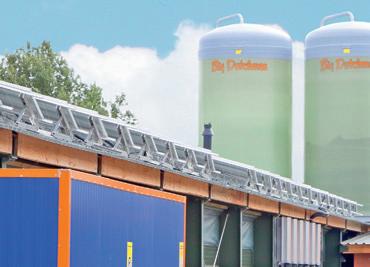
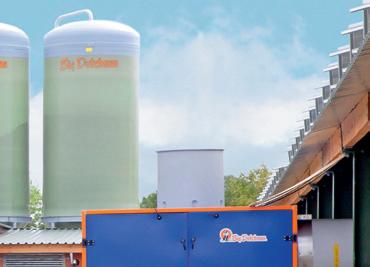


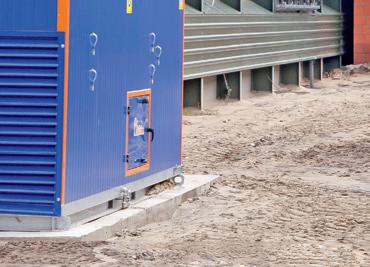




















Industry leaders say a reduction in pork-related spending by the Agriculture and Horticulture Development Board is understandable given funding constraints.
A five year plan covering the years 2022 to 2027 was unveiled by the AHDB last month. The levy body expects its funding for pork to fall from £10m to £8m – mainly due to reduced levy income following the contraction of the sector.
A change in the AHDB's VAT status will also contribute to the fall in funding. The strategy says expenditure will be divided between three priority areas, with marketing allocated 40%, exports 33% and reputation 27%.
Export promotion will focus on identifying lucrative markets and optimising access for all cuts. For example, while whole muscle can be exported
to Mexico, extending that to include offal would give even greater benefit.
The marketing spend will aim to inspire shoppers to choose pork for both home cooking and eating out.
It comes amid an ongoing debate over restrictions on promoting ‘British’ pork, and the AHDB's Feed the Family for Less campaign.
Priorities for spending follow the AHDB's 18-month-long Shape the Future initiative, which gave levy payers across all sectors the chance to tell the AHDB what it should focus on over the next five years.
Existing AHDB initiatives which will no longer be funded include the Pig Health Scheme, the Real Welfare programmes and the employment tool Pig Pro. Instead, the AHDB will pri-
The AHDB plan follows an 18-month consultation with producers
oritise marketing, exports and reputational work.
AHDB pork sector council chair Mike Sheldon said: "It is vital for the levy to deliver the very best value.

"In May 2022, producers and processors representing over half of all pigs farmed and three-quarters of those
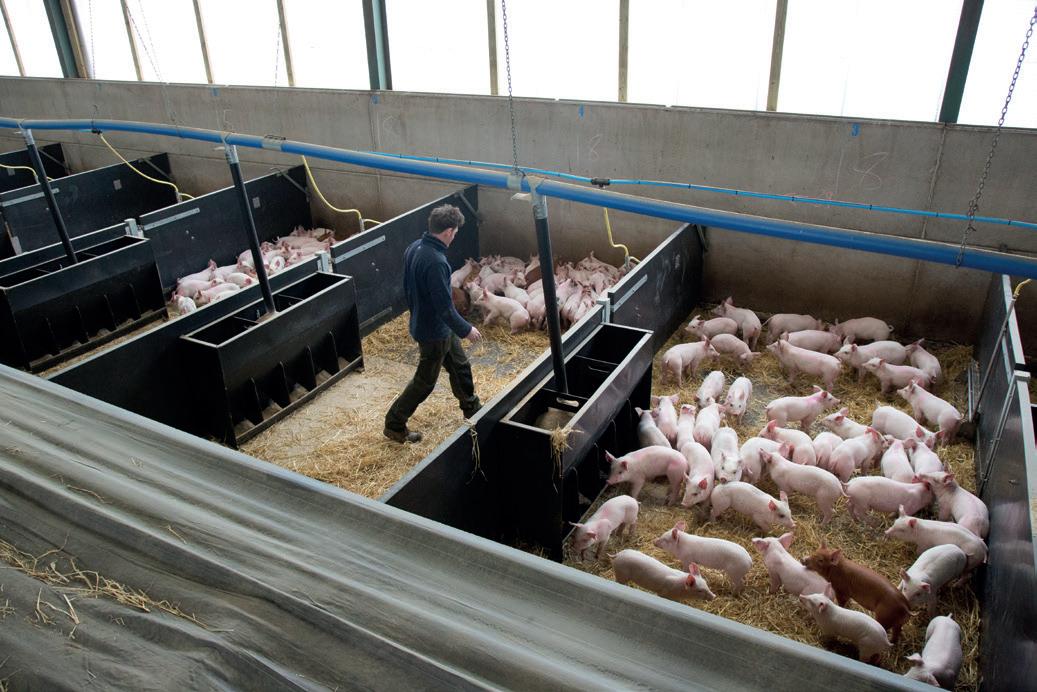

It’s been a brutal time for the pork sector, with the combination of Brexit and Covid creating a perfect storm, followed by hugely inflated costs of production resulting from the war in Ukraine.
Supporting levy payers through these unprecedented times is more crucial than ever.
Despite these daunting challenges, we can take great pride in England’s pork industry. With producers and processors operating to exceptional standards, British pork is preferred by most UK retailers, and there is demand from almost 100 other countries too.
With such strong demand comes strong competition to supply. It’s never been more important to act together – and that is where your levy comes in.
It is vital for the levy to deliver the very best value. In May 2022, producers and processors representing over half of all pigs farmed and three-quarters of those processed, told us how they wanted their levy spent via AHDB’s Shape the Future vote.
This turnout was an absolute credit to an industry that was under enormous strain at the time. It is symptomatic of
the true grit, hope and determination that we need for the future.
In the Shape the Future vote, you gave clear messages that your sector council has taken on board to direct the work of AHDB over the next five years.
This resulted in the three key themes of work below, which are detailed in this plan: Marketing. Exports. Reputation.
Thank you to everyone who participated in the Shape the Future vote. This plan for the next five years is not the end of the conversation – rather the beginning.
As we all know, we will need to show agility during these turbulent times.
 Mike Sheldon
AHDB Pork Sector Council Chairman
Mike Sheldon
AHDB Pork Sector Council Chairman



















Poultry farmers have been encouraged to take action and follow strict biosecurity measures to protect their flocks throughout the winter.
It follows last month's declaration of an Avian Influenza Prevention Zone across Britain in a bid to curtail the spread of the virus – which has seen thousands of birds culled throughout the summer and autumn.
Experts say simple steps taken by poultry farmers to improve hygiene on farm and in poultry houses can significantly reduce the spread of avian influenza throughout commercial flocks and across the country.

BASF specialist Anthony O'Hare says poultry farmers should look to increase levels of hygiene in enclosures. Doing so will protect birds from viruses like avian influenza as well as other diseases, he says.
“Disinfectants can reduce the spread of diseases dramatically if used carefully and consistently. A focus on hygiene is one of the simplest and most economical ways to reduce the spread of disease and promote healthy conditions across poultry farms.”
Poultry producers can use Sorgene Xtra at a dilution of 1:250 for general hygiene and at 1:200 in poultry accommodation ar-
says Mr O'Hare. All buildings and housing can be re-stocked soon after application, he adds, suggesting the following approach (see panel)
















“These simple steps and effective tools will help reduce the spread of



absolute minimum and prevent farmers suffering substantial finan-
from page 31
processed, told us how they wanted their levy spent via AHDB’s Shape the Future vote.
"This turnout was an absolute credit to an industry that was under enormous strain at the time. It is symptomatic of the true grit, hope and determination that we need for the future.
"In the Shape the Future vote, you gave clear messages that your sector council has taken on board to direct the work of AHDB over the next five years."
National Pig Association chief executive Lizzie Wilson said the NPA would continue to support the AHDB's work. "This looks like a sensible
approach, given the constraints on levy funding AHDB will face in the future.
“We broadly agree with the priorities identified – export development is key to our ability to maximise the value of the carcase and the AHDB has an important role in maintaining the industry's reputation.
“The domestic market is also hugely important and it is essential that this work continue to be focused on effective promotion of British product. Of course, it is disappointing that funding in some areas is ceasing, but we understand the reasons for this.”
cial losses, as well as protect themselves, their friends and family, and their flocks.”
1 Thoroughly disinfect all accommodation. This is best done by pressure washing the sides and floors of bird housing with a quality bactericidal detergent before spraying with a disinfectant.
2 Bacteria, viruses and other micro-organisms are often present on clothing and boots. Those working with birds should wear clean overalls and dip boots in disinfectant to reduce the risk of introducing harmful diseases. Before entering poultry housing, it is also good practice to wash hands with an anti-bacterial soap.
3 Any equipment that is being used in conjunction with birdkeeping should be disinfected in a solution of Sorgene Xtra before being used. Solutions should be changed frequently.
Farm leaders say major reforms are needed across the pork sup ply chain to avert the collapse of the British pig industry and protect the UK’s food security.
The National Pig Association’s sub mission to a Defra’s consultation on contractual practice in the sector sets out a blueprint for a fairer, more trans parent – and ultimately more sustain able – pork supply chain.
Key demands include the introduc tion of legislation to underpin new pig contracts. The NPA says this would allow producers, marketing groups and processors to negotiate terms that work for all parties, including ensur ing a fair price for producers.
The NPA also says better forecasting to improve business planning would in crease transparency across the chain, helping pork buyers make better use of the entire pig carcase, rather than just selective cuts.
The NPA’s submission to the con sultation, which closed earlier this au tumn, comes against the backdrop of a catastrophic 18 months for the in dustry that has seen producers rack
Many have been forced out of busi ness, with government figures high lighting an 18% decline in the pig breeding herd in the year to June 2022. With average pig prices still well below average production costs, more produc ers stand on the brink.
Norfolk pig producer and NPA chairman Rob Mutimer said: “We be lieve this process offers real hope for the British pig sector, which has tak en an absolute battering over the past 18 months.
“It has become fairly obvious to all involved that the supply chain, as it stands, is broken.
“Contracts, where they exist, have proved to be not worth the paper they
The sector has racked up losses of more than £600 million.
producers have been left powerless as their pigs have been rolled week after week."
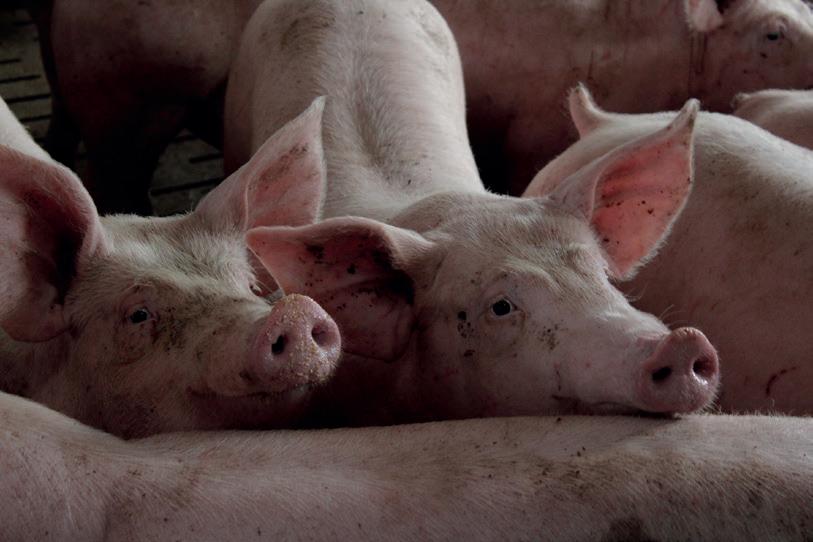
Combined with the war in Ukraine, Brexit-related labour shortages and soaring input cost, the situation had left the sector hugely damaged, said Mr Mutimer. The UK's capacity to produce pork was now under threat, he added.
“We believe the measures that we and others who have responded are calling for will, if implemented, form the basis of a stronger, more coherent supply chain where all parts have the opportunity to thrive.
“But the government must act de cisively and quickly before it is too late for the pig sector – and in order to fulfil its stated aims of reinforcing the UK’s food security.”
The National Pig Association took soundings from across the supply chain before responding to the Defra consultation.
It says there was a clear acknowledgement from producers and the allied industry that contracts are unfair. Respondents identified a disproportionate spread of risk through the supply chain that must be addressed, it added.
“Our response stressed that change is needed throughout the wider supply chain, including the retail sector, not just between producers and processors,” said the NPA.
The association is calling for:
1 Contractual practice to be underpinned by legislation to ensure accountability and deliver change for all producers and processors.
2 Contracts to follow a framework to allow producers and processers/marketing groups to negotiate terms that work for both parties.
3 Penalties for out of specification pigs should not deliver a negative or zero value when contracted pig numbers have not been fulfilled.
4 Better forecasting to help inform business planning, including a mandatory monthly pig weaning survey.
5 Processors to submit details of contracted pig numbers to Defra for price reporting.
6 Full transparency for price reporting mechanisms.
7 Retail, food service and wholesale businesses to formally report the volume of cuts, carcase utilisation and origin of pork.
8 Retail and food service companies to buy a reasonable proportion of the pig carcase and utilise more British pork from it for products within their supply chains.
The association says pig prices need to be fair, transparent and negotiable. It says all parties should be able to negotiate a contract fairly, with one-sided clauses removed and a mechanism introduced for dispute resolution.
The supply chain, as it stands, is broken
“


The gut biome is an essential component of animal health. It needs to grow and mature well in order to ensure resilience in the flock. Signis - the first of a new class of additive, stimbiotics - influences biome development delivering a beneficial microbial population. The healthier the biome, the healthier the profits. Find out why Signis is getting so much attention @ www.abvista.com
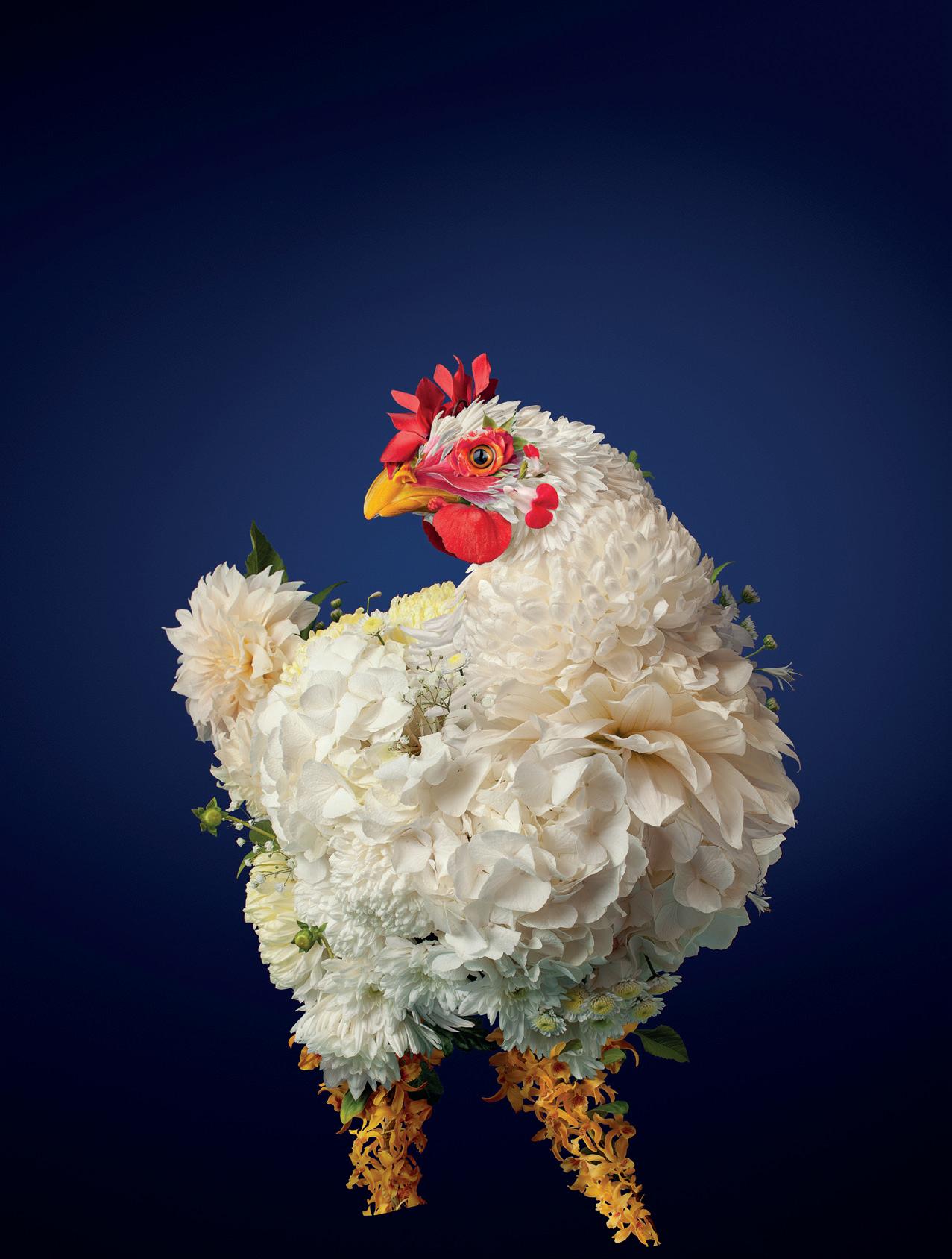
Retail giant Sainsbury's has been slammed after stocking imported eggs from Italy rather than paying a higher price to British producers.
The British Free Range Egg Producers Association (BFREPA) said farmers could be driven out of business, after warning earli er this year that the country would be short of British eggs by Christmas unless farmers were paid a sustainable price.
Soaring costs, which include chicken feed, energy, diesel, pullets and packaging, have crippled many businesses, causing farms to reduce hen numbers, pause production tem porarily, or quit the industry altogether.
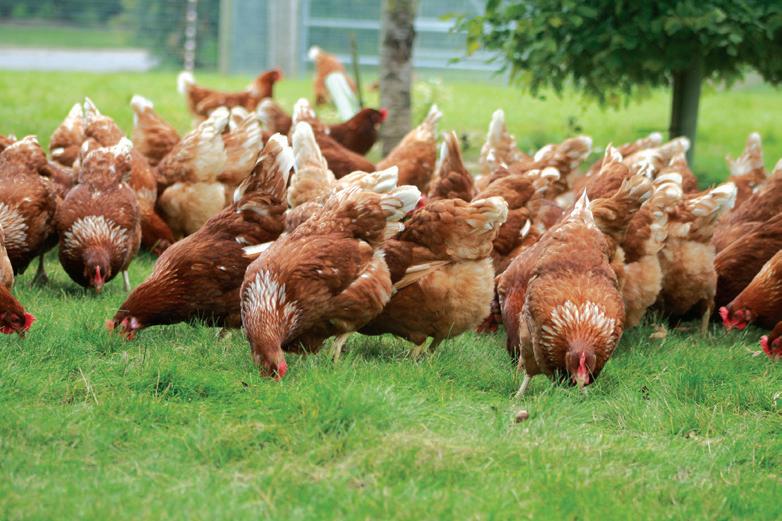

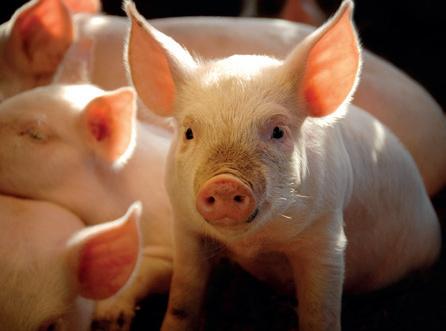
BFREPA chief executive Robert Gooch said: “We have been warning for months that failing to pay farmers a price which allows them to make a profit would result in mass de-stocking or, worse still, an exodus from
bury's demanding a meeting to discuss a more sustainable future for producers. “Seeing Ital ian eggs on the shelves is a wake-up call to all retailers that they can’t expect farmers to work for nothing. Enough is enough.”
He added: “Sainsbury’s has made strong commitments to British free range egg pro ducers in the past and I hope a positive dia logue can bring about change from what is a disappointing situation.”
BFREPA data shows the average retail
price of a dozen eggs has risen by 50p. But some farmers have only seen a price rise of between five and 10p. In March, BFREPA called on all retailers to increase the price paid to farmers by 40p per dozen.
Avian Influenza has compounded the is sue of egg availability, with the disease result ing in the compulsory culling of hundreds of thousands of egg-laying hens across colony, barn, and free range systems.
There are some 36.7m egg laying birds in the national flock, but there is capacity on farms for more than 44m hens.






Recognising






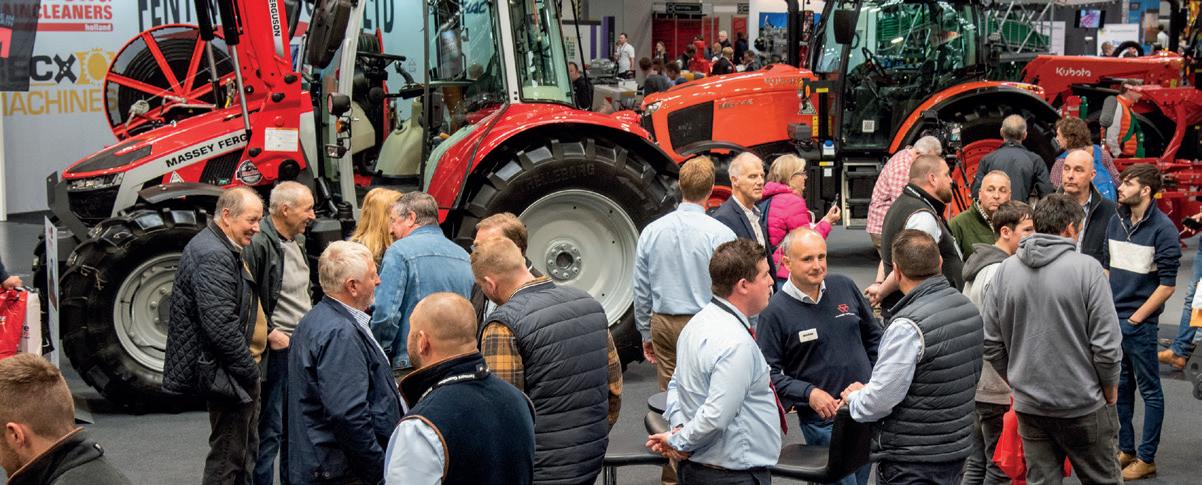
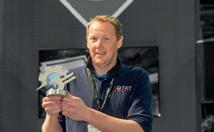
From

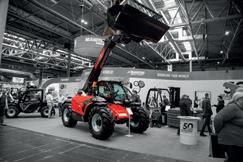



•
•
Top machinery show LAMMA returns to its traditional Jan uary date next month – for the first time in three years.
LAMMA 2023 will be held on 10-11 January at the Birmingham NEC. It will include exhibits from all the main farming sectors from companies who provide cutting-edge machinery, tech nology and equipment for the industry.
More than 700 manufacturers, dealers and distributors are expect ed to showcase the latest tractors, combines, arable and grassland ma chinery – as well as a wide range of new technology, services and tools for every sector.
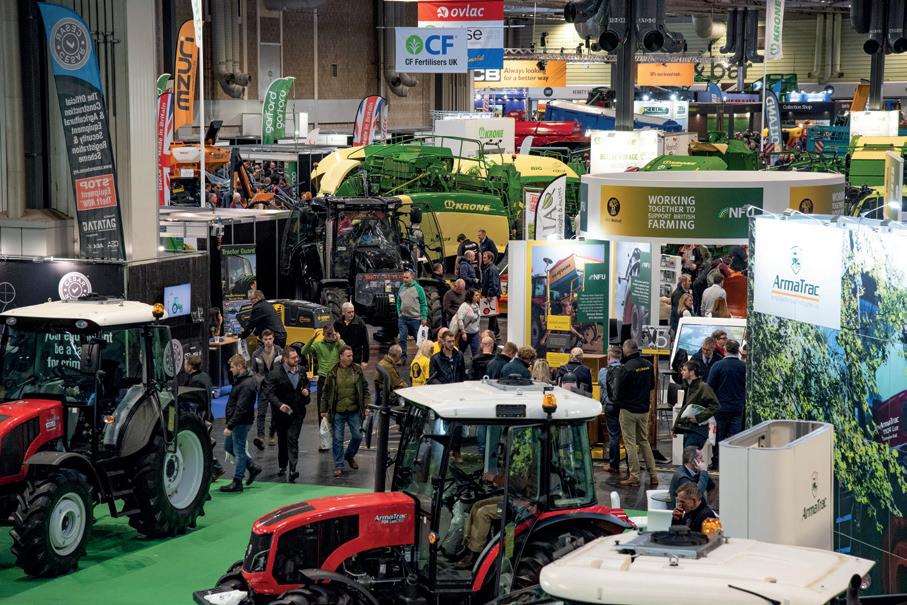
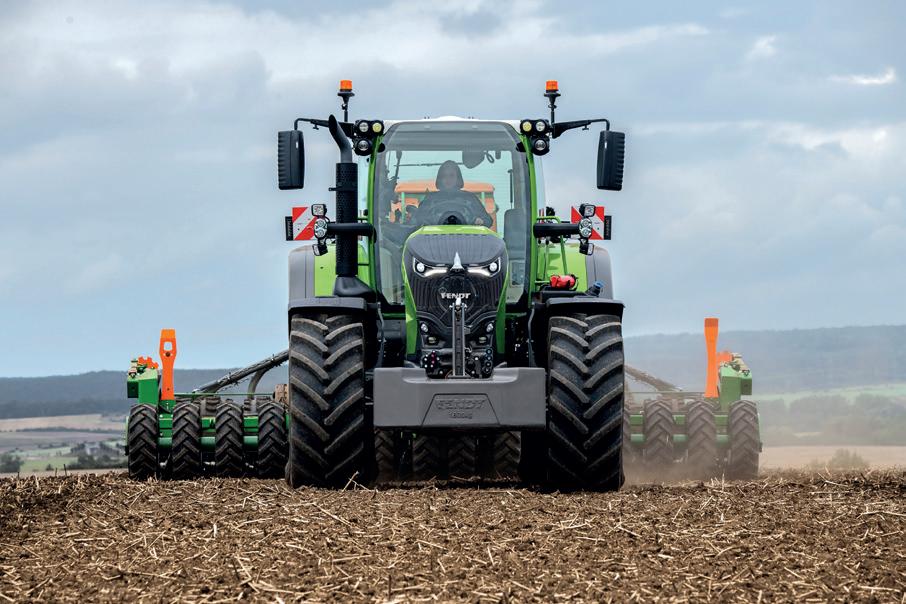

Fendt returns to LAMMA with a host of new machinery. It will include the UK launch of the new Fendt 700 Vario Gen 7, featuring a new 7.5 litre AGCO Power engine with outputs of 203hp for the 720 model and 300hp+ for the top 728 model.
“LAMMA is the the perfect place to launch the new 700 Vario Gen 7,” says
a fitting location for the show. It helps raise the profile of the agricultural in dustry in the UK and enables Fendt to show the best we have to offer.”
Syngenta will unveil a raft of innova tions and new technologies to aid more accurate and efficient application and product use. The company’s revolution ary new EvoPac product packaging will have its first UK showing.
The pack is purpose designed to optimise results with the pioneering EasyConnect system – which Syngen ta says is set to become the industry standard closed transfer method for sprayer operators.
Meanwhile, Knight Farm Machin ery’s new Vario Select control system enables users to achieve totally even spray application when working on un even shaped field margins and around fixed in-field obstructions.
The system works by using combi nations of four different capacity spray
to 16 different application rates, typ ically from zero to 800 litres/minute.
Other refreshed LAMMA features will include the Future Farming Trail and the latest cutting-edge robotics and au tonomous machinery for the farming industry – made by manufacturers big and small.
“We're looking forward to welcom ing the farming community back to LAMMA once again,” says Nichola Bell, Head of Events for Agriconnect which organises the event.
“With sustainability, production ef ficiency and food security at the top of the industry’s priority list, LAM MA is the perfect place for farmers and business owners to find the right tools and strategies help them achieve their goals.”
Visitors can expect to see a return of familiar features like the Farm Safe ty Zone, the ability to earn CPD points and a wide range of seminars on con temporary topics in agriculture. For details, visit www.lammashow.com
Atrio of trailers offering users the option to switch bodies to increase versatility and safe ty will be shown by HM Trailers at LAMMA 2023.
The Essex-based manufacturer will be displaying a pair of hook-lift trailers, in HL-16 and HL-20 designs with the former sporting a new half-pipe rock body, alongside a body prop version of its HM 1517 grain trailer.

The body prop on the HM 1517 grain trailer allows the body to be re moved without the need to mechani cally lift it off the chassis. A supporting leg on each corner allows the various hydraulics to be disconnected.
The bare chassis can then be driv en away and fitted with other bodies, including a tanker, flatbed, and rock
unit. The changeover takes an hour to complete, with the added benefit of the body staying free of contamination and damage during storage.
Keeping specific bodies for their designated jobs will increase longevity, says Grant Perry, owner at HM Trail ers. This option may appeal to farm ers over a hook-lift design, he adds.
“The body prop grain trailer allows farmers to run a high-spec trailer chas sis with a removable body, without the added weight of a hook-lift design.
“We have seen that farmers want ad ditional versatility from their trailers, but many don’t require regular chang es to justify a hook-lift model.
"This option allows grain units to be swapped after harvest, avoiding damage and contamination from win ter jobs.”
The smaller of the two hook-lift
It has a high-spec chassis with removable body
models will display the HM19 halfpipe rock body, aimed at users requir ing a dedicated unit for carting bulky materials.
The benefits of the half pipe design in clude the self-cleaning nature, allow ing all cargo to exit the trailer without becoming lodged in the front corners. The model on the stand will be a 15m3 design with a standard hydraulic tail gate, says Mr Perry.
“We had users asking us for a halfpipe body for the Hook-lift chassis to
Vegetable packing experts
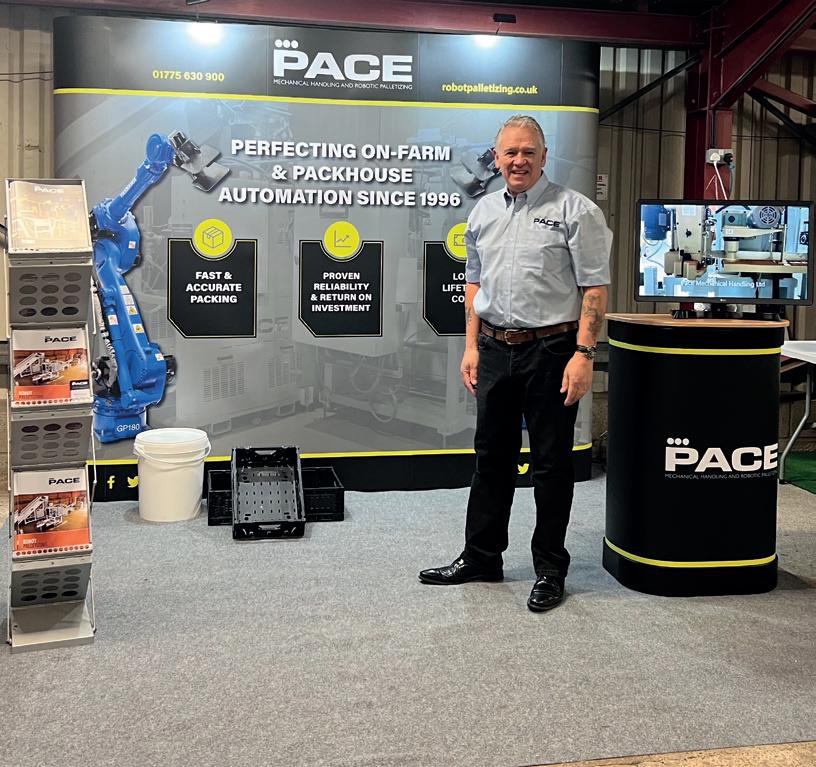
Pace Mechanical Handling will showcase its range of ro bot palletisers, weighers, sack placers and stitchers at LAMMA.
Having recently completed its 250th installation and having been appointed sole UK importer and dis tributor to TMI, Pace director Nick Ce sare says now is the ideal time for the company to make its LAMMA debut.
“Over the last couple of years, we've seen a dramatic increase in enquir ies and orders from packers and grow ers looking to increase efficiencies and cope with labour shortages.”
“Historically, our business has grown due to word of mouth and recommen dations from happy clients. This is very much still the case, but we feel that our partnership with TMI takes us to another level and we're keen to really promote ourselves.”
Established in 2000, TMI is one of Spain's leading bagging, palletizing and wrapping machinery manufac turers, offering an extensive range of end-of-line machines, which are used by some of the world's largest manu
Supporting legs allow hydraulics to be disconnected.
Above left: The half-pipe rock body is designed for carting bulky materials.
cart rock, aggregates, soil, and other bulk materials. It is proving more versatile than the flat-bottomed dump trailer option and is a crossover from commercial dump trailer and Hooklift design.”










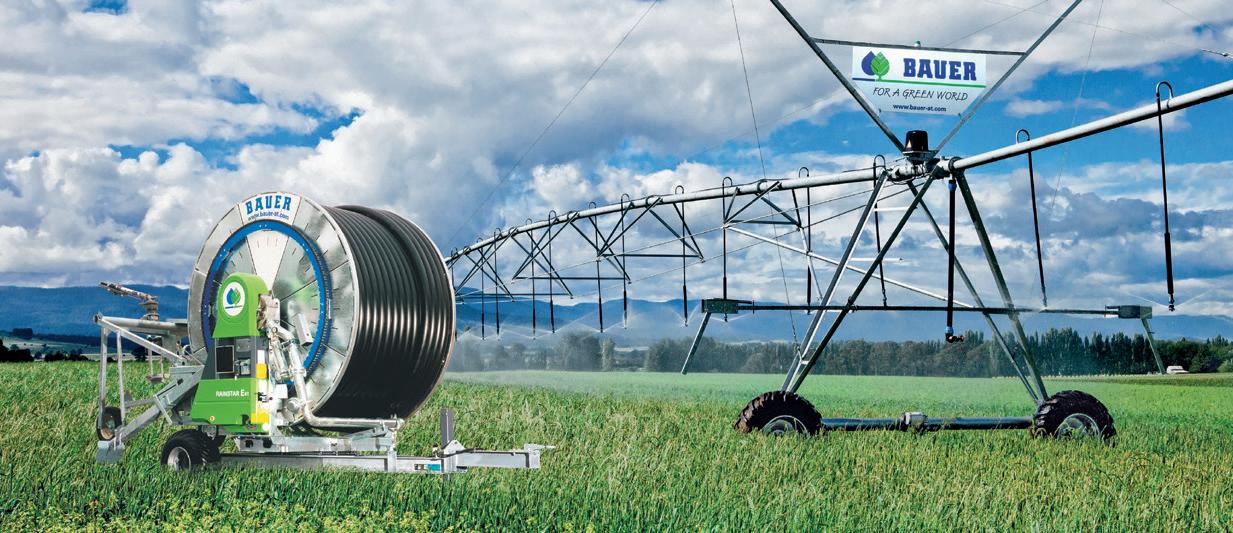











Farmers are interested in ways to make their investments go further and along with being able to switch between different bodies, from a safety aspect, it means maintaining only one set of wheels and brakes.




HM Trailers will be on stand 19.260 at LAMMA 2023.
new product recognition app from spare-parts and agricultural accessories specialist Kramp aims to bring an end to the ‘selection frustration’ of choosing the correct spare part or replacement

Simply by taking a photo of the item in question, customers can use the tool to identify the part and its catalogue number, enabling rapid ordering – 24/7 – and delivery straight
The app uses artificial intelligence to scan and analyse an object in a
photo. It then tries to match the object against more than 500,000 items from the Kramp catalogue. If the user has a Kramp account, parts can be ordered for next-day delivery.
“In addition to the AI recognition, the app will also scan barcodes, which provides an alternative route for product identification and ordering, all through the same, easy-touse interface,” says Gene Orchard, Kramp product specialist.
“The app also supports sharing of product pages via email or WhatsApp, enabling queries to be checked and discussed with a dealer, before confirming an order.”
The app enables rapid ordering.
Kramp’s app can be downloaded from the App Store or Google Play. It can be used by anyone, but full functionality – and the next-day delivery to any of Kramp’s 1200+ UK dealer locations – is only available to registered account holders.
GT Bunning and Sons returns to LAMMA with a spreader equipped with a large diame ter, narrow tyre for farmers wanting to reduce crop damage when spring top dressing.
Bunning will be showing three ma chines at LAMMA 2023.




The Lowlander 120 HY HBD fea tures a set of Alliance 580/85 R42 IF tyres, offering a longer tread pattern and bringing the machine’s overall width down to 2,820mm.
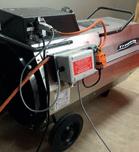


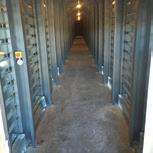
A hybrid machine, it features the wider spreading design of larger mod els. This improves the shredding of cattle muck for greater accuracy, and weigh cells for rate control.



This tyre option helps farmers re tain the flotation benefits of IF tyres and is better suited to tramline widths when travelling through growing crops. Ben Johnson, UK and Ireland sales manager for G T Bunning and Sons, says it will appeal for several reasons.
“The 120 HY HBD model on the stand allows a 19.1m³ load due to the
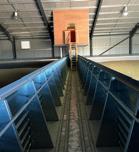
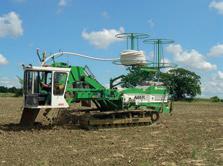
built-in flared side extensions, but cru cially features a shorter wheelbase than the bigger Lowlander 150 mod el,” says Mr Johnson.
“It will lessen crop damage when turning on the headlands. We are see ing more customers wanting to top-
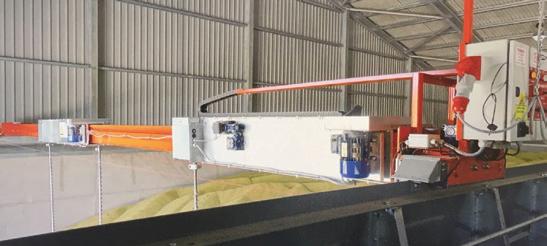
creased accuracy.
This machine will also be equipped with weigh cells, which allows the op erator to set a target rate for precise applications of products. A smaller 105 TVA will also be shown, aimed at smaller farms wishing to utilise their












































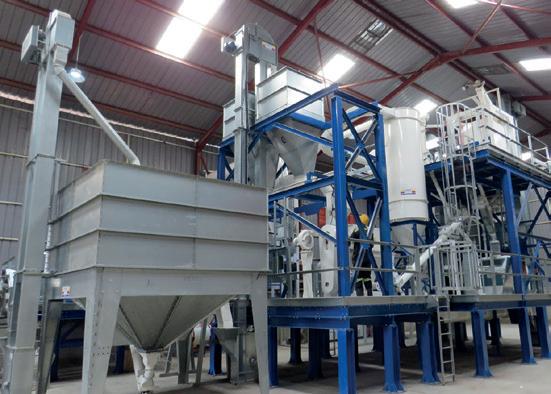






Anew mobile grain cleaner will be launched at LAMMA – to meet increased demand from growers for flexible on-farm grain cleaning solutions.
Developed by McArthur Agricul ture, the mobile cleaner enables farm ers to add value to combinable crops post-harvest. It enables the production of farm-saved clean-only seed, grain cleaning to meet contract specifica tions and the separation of intercrops.
“Our mobile grain cleaner is com pletely self-sufficient,” says McArthur Agriculture managing director John McArthur. “It can be quickly and eas ily setup and operated by one person and comes complete with an onboard generator so it can operate anywhere.”
With JK Machinery’s popular JCC VibroCompact 08 vibrating sieve clean er at its core, the machine is mount ed on a 14ft Nugent trailer with a cur tain side body and can be towed behind most pickups.
“The mobile grain cleaning system we will be unveiling at LAMMA, is the
first production model resulting from many customer requests for portable cleaning systems and the design and build of several ‘one-off’ solutions,” said Mr McArthur.
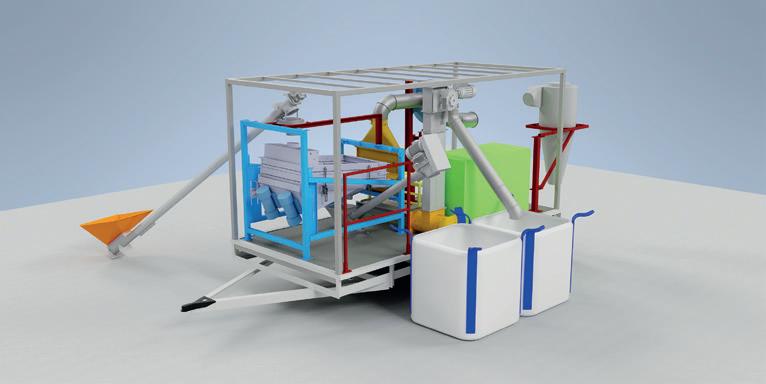
“Farmers now have the opportunity to make a cost-effective investment in their own system that will allow them to add value to their own crops and provide an additional revenue stream from contracting.”
As well as the mobile cleaner, McAr thur Agriculture will be showcasing a Mecmar SSI 28 T grain drier on its stand. A working demonstration show ing how a Sukup grain drying silo op erates is also likely to be a highlight for visitors.
Mecmar driers offer energy saving and performance enhancing features including a full-length stainless-steel furnace, plenum air distribution sys tem and high open space perforated screens, all designed to deliver more airflow with less energy.
“The next year will see the use of electronics to enhance the Mecmar’s grain drying process to minimise en ergy usage,” says Mr McArthur.
“Accurate collection of fuel and pow er data delivers a clear picture of run ning costs and farmers will soon be able to optimise the drier to deliver great er economy or performance.
“The demonstration shows how Sukup grain drying silos provide both functionality and value, which in many cases, offer an alternative to new grain storage sheds equipped with integrat ed drying floors,” says Mr McArthur. McArthur Agriculture is on Stand 8.644 in Hall 8.
The Mercedes-Benz Unimog team will be bringing a U530 and a U430 machine to LAM MA – as well as a UHE extreme off-roader with crane.

The company has introduced more powerful versions of its 4x4 Unimog UGE implement carrier. Now availa ble for order, the U435 and U535 pro duce 260kW (354hp) – a 40kW (54hp) increase on the highest output pre viously available from the Euro VI Step E 7.
Maximum torque is up by 180Nm to 1,380Nm, which is available from 1,800rpm. Daimler Truck engineers have also purpose-designed and built an automated manual transmission to manage the higher outputs of the U435/U535.
Improved gear change co-ordination and clutch control produces quicker shifts that translate into a smooth er ride and improved fuel-efficiency. Automated transition is expected to prove popular as an alternative to the standard-fit manual gearbox.
In other developments, the Unimog implement carrier can now be speci
fied for the first time with self-levelling suspension for the rear axle. This em ploys gas storage tanks and hydrau lic cylinders, instead of the usual coil springs.
As well as providing a constant driving level irrespective of load sta tus or any rear attachments that may
be fitted, the hydropneumatic system contributes to handling stability and assists operators when coupling and uncoupling implements.
The U435 and U535 have maxi mum gross weights (with relevant special equipment) of 14 tonnes and 16.5 tonnes respectively.
The new U535 Unimog is due to arrive in the UK next month
“
Global virtual fencing company




Nofence will be showcasing its latest technology at LAMMA –showing how livestock can graze with in a defined area out in the field with no physical fencing.


Nofence uses GPS technology, cellu lar communication, audio signals and solar power to create a virtual fence – all at the touch of a button with a smartphone app, explains the com pany's UK general manager Synne Foss Budal.
“When an animal steps over a Nofence boundary, the collars emit an audio cue to warn it of the bound ary perimeter. If the animal does not turn around upon hearing the predict able audio cue the collars issue an elec tric pulse.”
The collars also track the animal's location. They include specially made solar panels to ensure long-lasting bat tery life throughout the grazing season. This makes livestock easier to monitor.

“We train the animals to listen for their fence boundary,” says Ms Budal. “So, we are still relying on the animal’s senses to stay within the grazing pa ramete – but it is hearing rather than visual.”
With more than two years of experi ence in the UK, Nofence has proven to be suitable for both conservation and intensive grazing systems.
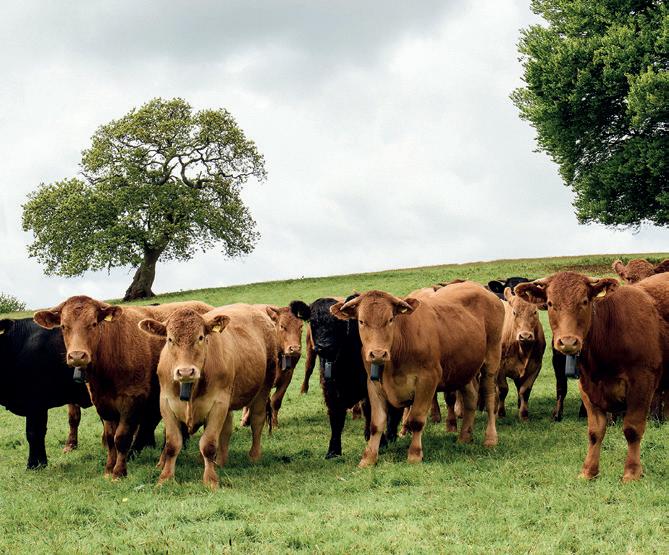



“The technology has proved to excel in a diverse set of applications,” says Ms Budal. “Our trial work and custom er experience have shown that cattle can be grazed on intensive rotational and strip systems while successfully maintaining tight covers.”




Nofence has also been a popular tool for upland producers wanting to max imise land usage and better manage grazing without investing in physical fencing infrastructure.
“It’s also a game-changer for farm
For
Distributor Reesink Agriculture is tak ing five of its Farmtrac tractors to LAMMA – including the industry's first all-electric FT26G compact tractor.
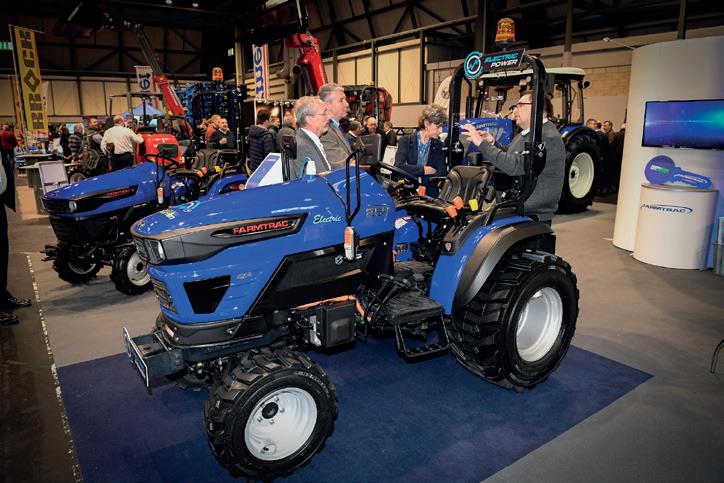
Alongside the all-electric machine, Re esink will be showcasing the FT26 – the brand’s best seller for a compact perfor mance; the FT6050 and 6075E – two of its biggest hitters for productivity; and its small but mighty FT22.
“This is the most comprehensive selection of tractors we’ve taken to LAMMA and the reason for that is visitors respond incredi bly well to the Farmtrac range, quality and value,” says Reesink tractor sales manager Steven Haynes.
“We want to give them a close-up look at what the brand has to offer. The show has be come a key event in our calendar, so it was right to make LAMMA 2023 our biggest yet.”
Mr Haynes said the FT25G had gone from





strength to strength since it launched a couple of years ago, demonstrating how businesses can benefit from greener technology without compromising on productivity.

It has been praised electric vehicle and technology enthusiasts for bringing zero emis sions, minimal noise and vibration to the UK farming sector alongside high energy efficien cy and low operating and maintenance costs.
The best-selling popular FT26 is aimed at farmers who need results in tight areas. Its light and narrow body and short turning ra

dius makes it makes highly manoeuvrable and ideal for tight indoor spaces.

The target market includes equestrian cen tres and smallholdings. Despite its compact size, the FT26 has a 750kg hitch point lift ca pacity, making it a useful workhorse.
The most compact in the range, the FT22, will also make an appearance. It may be small, but it’s packed with performance possibili ties, offering great value and plenty of scope with a wide range of customers thanks to it, says Mr Haynes
the winning combination: u Capacities from 5 to over 100 tph u Fully galvanised for indoor or outdoor installation u Fully automated, energy efficient low noise operation u Ideal for cereals, oils seeds, pulses and seed crops u Dust control Turboclean fans


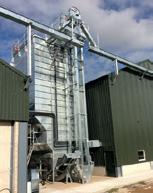
the winning combination: u Capacities from 5 to over 100 tph u Fully galvanised for indoor or outdoor installation u Fully automated, energy efficient low noise operation u Ideal for cereals, oils seeds, pulses and seed crops u Dust control Turboclean fans

Crop storage specialists BDC systems will debut a new post-harvest soft ware application at this year's LAM MA event.




Developed by Skandia Elevator, Grain Balance’s Grain App allows farmers to eas ily and accurately measure, in real time, the loads of grain arriving on farm to go into stor age, the field in which it was grown and the yield per hectare.
“At any time, farmers will now be able to quickly and easily see the amount of grain they have harvested – no more guesswork around what field yielded what, or how much grain is in store,” says BDC sales director Andrew Head.


It has potentially never been so impor tant for farmers to take advantage of the available expertise to ensure they have the

right machinery in place to make harvest 2023 run as smoothly and as profitably as possible, he adds.
“Having entered information around the fields to be harvested into the Grain Bal ance’s Grain App prior to harvest, once com bining starts all that has to be done before tipping grain, is to open the app and input the field the grain has come from.”

Grain Balance is connected via the inter net to the Grain Balance Scale, a sensor kit
which sits on the elevator taking grain into storage. The sensor collects data around the grain as it passes through the elevator.
Data is then sent to Skandia’s Grain Cloud. Here, the weight of the grain is cal culated and presented back to the farmer via the software app, which Mr Head says runs on any smartphone.
Latest developments to BDC System’s Moisture Monitoring System (MMS) will be another first for BDC at LAMMA.
“We have now engineered our MMS so it monitors the moisture content of the crop going into and out of the drier and then automatically controls the discharge rate of the drier should the mosture fall below or rise above the predefined levels,” says Mr Head.
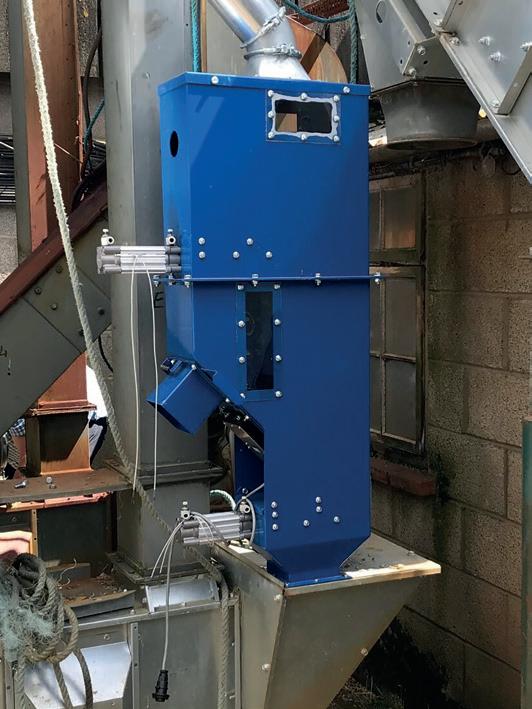
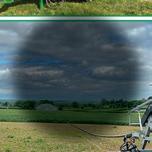

This ensures the crop is discharged at a



constant moisture content. “The ability to automatically control the drier means that the drier’s energy-efficiency is greatly im proved. Energy is not wasted by over dry ing the crop.”

















A 5t Svegma continuous flow drier will form the centrepiece of the BDC stand. Farm ers will be able to see how they can success fully manage wet grain – have additional ca pacity to cool hot grain if required.






With Svegma’s proven reputation for out standing quality and efficiency its driers (5t to over 100tph) are used extensively by farm ers, farming co-operatives, commercial plant operators and maltsters.
BDC Systems will also showcase Skan dia Elevator’s next-generation H-Line eleva tors. The H-Line will be of interest to larger farm enterprises, commercial grain storage operators and milling plants requiring high tonnage grain handling capability.
Skandia’s H-Line delivers elevators that are easy to maintain, have optimised flow re sulting in less wear and tear to both the ma chinery and grain, plus they can now reach an overall height of 70m.
The BDC team is on stand 8.410 in Hall 8.
 Andrew Head: Harnessing technology to maintain grain quality
Andrew Head: Harnessing technology to maintain grain quality
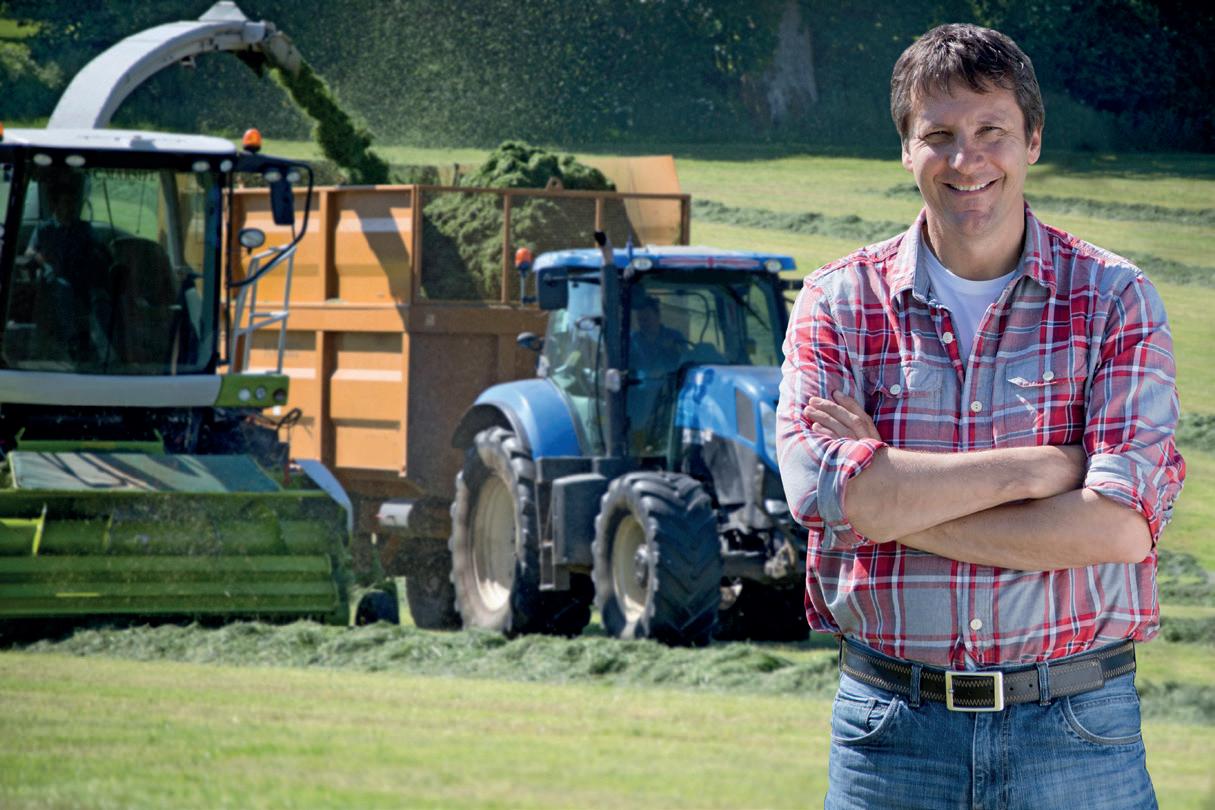
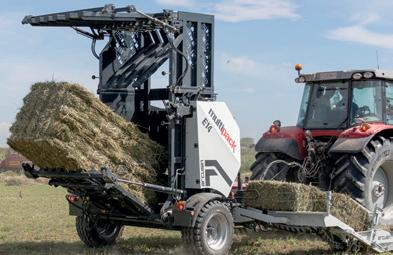
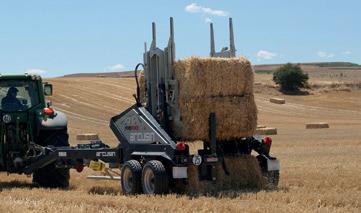


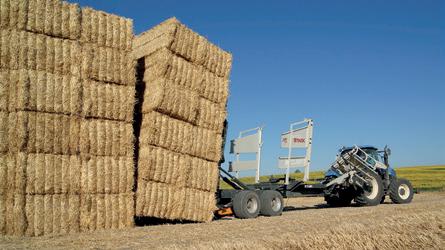







Abigger exhibition by Avon Tuning Agri and Plant at LAMMA will showcase their professional agricultural engine remapping softward and
now has increased functionality allowing agents to remap virtually any tractor on the market via the OBD port, including the latest Tier 5 machines.
Gareth Jones, from Avon Tuning Agri and Plant, says this improvement allows more users to experience the benefits of remapping. The company is pleased to be return-
ing to LAMMA in January, he adds.
“The demand for increasing work efficiencies through remapping is growing and the new software allows the latest tractor models to be remapped for both power increases and fuel saving benefits.”
Mr Jones says Avon Tuning had a great first appearance at LAMMA in May 2022. “We have taken a bigger stand to showcase how accessible and safe remapping is to the agricultural market.”



Also on the bigger stand will be the Dimsport DF2TR workshop-based dyno, aimed at dealerships and engineers after a stationary dynamometer capable of testing tractors up to 330hp.
For those interested in becoming an AT Agri and Plant authorised agent, a fully kitted out service van will be on display to show the type of software required when installing new maps on farm.
Machinery owners interested in a remap can find their local agent on a large map featuring the logos of their nearest authorised AT Agri and Plant agent. Avon Tuning engineers will be at LAMMA to talk about remapping opportunities and becoming an agent.
Do you need help with investment, diversification, tax planning or succession?


Our people have years of experience in the agricultural sector, helping generations of families. We are committed to delivering timely advice at every stage.
larking-gowen.co.uk Committed to you.

All the expertise and advice you need.
The cost of living crisis is creating diversification opportunities for farmers – with more people looking to holiday at home.
More farmers are looking to generate additional income from diversification, said keynote speakers at last month's Farm Business Innovation event, held on 2-3 November at the Birmingham NEC.
Ian Bell, of peer lending platform Folk2Folk said subdued economy brought great opportunities. “The rise in staycations, the climate emergency, Brexit, levelling up agenda and cost of living crisis all provide opportunities for farmers looking to diversify.”
Suffolk dairy farmer and award-winning cheese-maker Jonny Crickmore agreed. Farmers should think about the business prospects offered by their assets – and then consider which made most financial sense.

“If you don’t enjoy it, it’s not going to work,” said Mr Crickmore. “But don’t run before you can walk. Test things out and see what works. Most importantly, never stop learning.”
Other farmers sharing their first-hand experience of diversification included Ally Hunter Blair, who has equestrian and glamping businesses on his Herefordshire farm. He encouraged fellow farmers to take a leap of faith.
“Use your skillset and learn from your mistakes,” he said. “Don’t see barriers on your farms, see opportunities. Look into your business with fresh eyes.”
William Roobottom outlined the scope for promoting farm-based businesses on social media. He has developed an extensive following through sharing videos about his sheep flock and encouraged farmers to have a go.
“Be honest and be authentic be-

cause that is what people want to see.”
Other keynote speakers included Patrick Wrixon who encouraged farmers and landowners to consider care farming. His care farm in Herefordshire provides opportunities for people with mental health problems to benefit from spending time outside.
“Our overall aim is to enable people to reach a point where they can manage their own health in a sustainable way,” he said.
The exhibition halls at the Farm Business Innovation event were filled with businesses offering consultancy and advice services – as well as safari tents and glamping pods, renewable energy solutions, hot tubs and playground equipment.
The event's annual innovation award was presented to Dairy Vend-
milkshakes and other products direct from the farm.
Winner of the sustainability award was Inch Perfect Trials – a company which offers trail bike experience days. It is the sole UK retailer of the fully electric EM trials bike. Organiser Nichola Bell, of Agriconnect, said it was a successful event.
“It’s an exciting time for us at Agriconnect too with this being our first year running these events.
As a team we have plenty of ideas on how to make the shows even better next year and we look forward to welcoming everyone back to the NEC on 15-16 November 2023.”
maker Jonny Crickmore

Law firm Roythornes Solicitors has appointed a private client specialist with more than 25 years of legal experience to support its agricultural and landed estates network.














Focussing on Suffolk, Essex and Cambridgeshire, senior associate Ayesha Brown (right) will offer advice on all aspects of private client work including estate and succession planning, wills, trusts, powers of attorney, estate and trust administration.
Ms Brown said: “Roythornes take pride in its excellent client care and I feel privileged to be part of the team and available to support its clients and families through significant change in their lives.”
The increase in farmland values in East Anglia has been above the national average. With the uncertain economic climate, Roythornes believes professional services and advice will be
needed now more than ever.
Roythornes managing director Vember Mortlock said: “We are one of the top agricultural law practices in the country and support everyone from major blue-chip companies and established family businesses to new startups and individuals.
“What makes us stand out as agricultural experts is that we are up to speed on not only the practical aspects of farm businesses, but also the ability to help the families that own and run them. Ayesha is a fantastic addition to the team.”
Farmers are enthusiastic about improving soil quality – but remain wary about joining government schemes encouraging them to do so, reveals a survey.
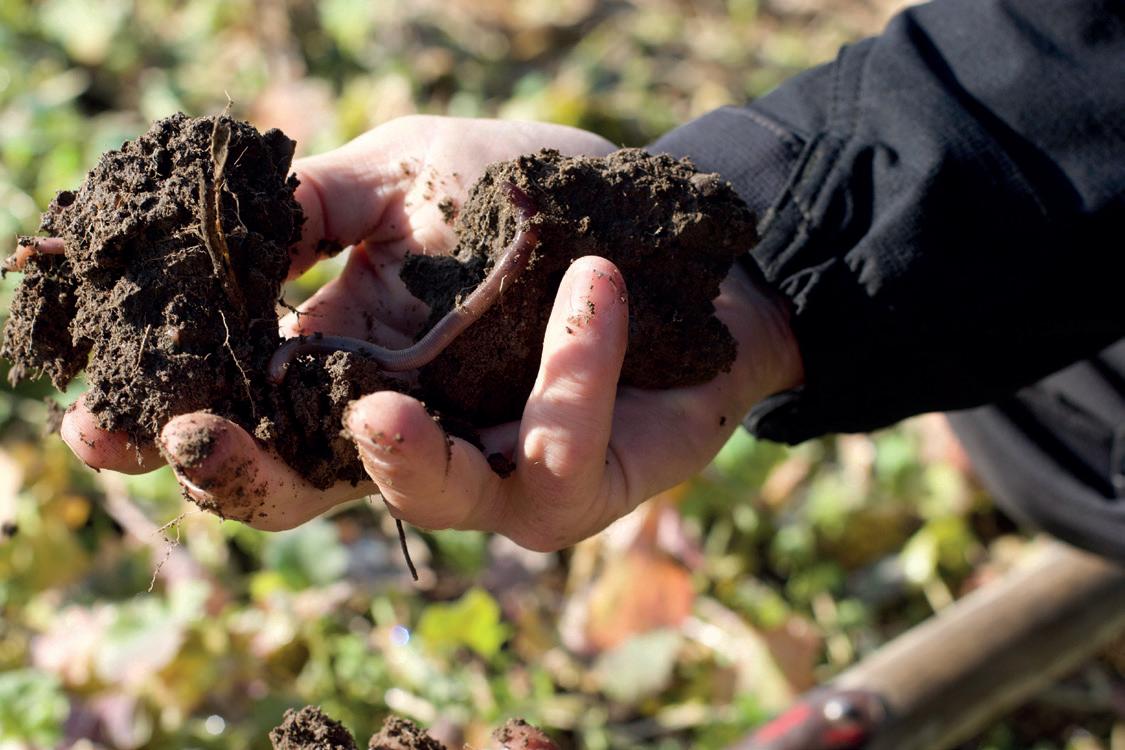

Most producers are keen to deliver environmental benefits but are cautious about signing up to initiatives such as Defra's Environmental Land Management (ELM) scheme, including the Sustainable Farming Incentive (SFI), says the study.
That is one of the findings of the Future of Farming survey, carried out jointly by the Country Land & Business Association and Strutt & Parker. Almost 200 landowners and managers in England responded online during June and July 2022.
The study was carried out to gauge the way farmers and landowners feel about Defra's new schemes being rolled out – and to identify how farms and estates are trying to build resilience within their businesses.
Concerns have been voiced about the slow uptake of schemes like the SFI, but the survey found farmers are much more open to taking steps
to improve their environmental management and enhance nature than is sometimes portrayed.
The number of respondents who have carried out a carbon audit during the past three years was relatively low (23%). But 56% of respondents said they were already making plans to reduce the carbon footprint of their farming business.
Only 40% of the respondents confirmed they have or were planning to enter the SFI within the next three years – which seems low considering the government’s target of getting 70% of farmers signed up by 2028.
But nearly two-thirds said they had signed up or intended to join the more established Countryside Stewardship Scheme.
Some 88% said they would be likely or very likely to take action to protect or improve soil quality and 82% said they would be likely or very likely to
landowners are less enthusiastic about delivering are supporting public access, managing land to reduce flood risk and restoring cultural heritage, although many of these are situation dependent.
Asked how they were improving business resilience, the most popular answers were diversification into non-farming enterprises, benchmarking, taking professional advice
As Biodiversity Net Gain (BNG) moves from being a Buzzword to reality, Mark Russell, Parter at Carter Jonas, thinks that there are a number of myths that should be busted early in the process: mark.russell@carterjonas.co.uk

MYTH 1: Size matters! Only one size will work, the larger the better. A larger site is likely to be more effec tive from an ecological and conser vation point of view. In terms of com merciality, it may also be cheaper per unit to create and manage. However, a small site in the right place can work where a developer needs a particu lar habitat in a particular place. Such as a small bit of wetland or a pond. In addition as the industry around BNG gets organised there will be aggrega tors like Carter Jonas who can bring the benefits of scale (in terms of man agement and relationships with de velopers) to a number of smaller sites from different landowners.
Myth 2: Anyone can do it?
Well yes and no. Yes if the site is in England and you have control of the site for 30 years from when the units are used you can be part of the market. So a tenant can join in if they have a long enough leasehold interest. However, given we may be talking about landscape and land use changes that goes well beyond the 30 years of the scheme we suggest that you discuss this with your Landlord first. Even where there
is a shorter term lease in place (5 year FBT for example) you are not exclud ed, but a higher level of co-operation with your landlord will be required.
Myth 3: This will devalue my land! If you want to sell up will it add or de tract value? The answer might not be the one you think. The simple view is that land with a restriction and low er intensity agricultural use will be worth less than before. However, if one has created a guaranteed in come stream for 30 years or via the landscape change uplifted the val ue of the whole farm then the over all impact on your asset might be a positive one.
Myth 4: It will be viable anywhere! Probably not. As with anything to do with property we always need to go back to “Location, Location, Location”. When dealing with BNG we need to add “Condition, Condition, Con
dition” into the mix. As BNG is linked to development how far you are from a centre of development is also impor tant (but do also see Myth 5 below).
The DEFRA metric reduces the ef fectiveness of a BNG unit the further it is away from the linked development. Currently there is debate as to where the boundary will be for the purpos es of calculations should it be Local Authority boundaries, County area or Landscape Character Areas (most likely to be a mixture of at least two of these) - we should know once the regulations are published.
Myth 5: It’s all about
No it’s not and whilst BNG is grab bing the headlines because it is close to having a framework against which value can be created ESG and Car bon should also be considered. These are not so location specific and will provide a second and third income stream into a Habitat Bank.
“
Natural
mate change.
CLA president Mark Tufnell said: “This survey has provided useful insights into farmer and land manager attitudes to the environment and signals that while many farmers and land managers are focused on food production, they are still keen to take steps to protect and enhance the environment given the right policies and payments.”
The 40% intention to enter into SFI was encouraging, said Mr Tufnell.
“When asked why they had not en-
tered SFI in 2022, the responses pointed to concerns about payment rates, but more frequently it was about waiting for more standards to become available or waiting to see if it would be a success.

“Only 2% said they were just not interested. These findings support the CLA’s call to Defra to fast-track the launch of new SFI standards and provide early clarity on payment rates so that farmers and land managers make informed decisions about the scheme.
“Similarly, it is encouraging to see

More than one third of respondents who said they would not be joining the SFI imminently said it was because the payment rates were not attractive enough.
Farmers said payment rates were too low given the costs of delivery, with 19% suggesting the process was too bureaucratic and 20% saying they wanted to see if the early stages were successful.
Asked about the changes they anticipate making to their farming business over the
next three to five years in response to agricultural policy changes, the most common answers included increasing the profitability of core agricultural enterprises, adopting regenerative farming and increasing the area of land under agri-environment agreements.
Few respondents said they were currently selling soil carbon credits (3%). When asked whether they had concerns about selling soil carbon credits, 43% said they wanted to understand their own carbon foot-
the level of interest in Countryside Stewardship. Defra should capitalise on this and ensure that the scheme remains available until the replacement Local Nature Recovery Scheme is ready for full launch.”
Rhodri Thomas, head of rural for Strutt & Parker, described the survey results as particularly timely – especially given the highly polarised debate around land use and the future of Defra's ELM schemes.
print first and offset their own emissions
A further 32% said they were not confident in the current buyers or schemes available, while 28% said they were worried they may need to prove their own low-carbon credentials to customers in the future.
Just over one third of respondents said they may be willing to sell soil carbon credits within the next ten years. But 40% of respondents said they needed more information on what selling carbon credits entails.

“
“Policy makers are looking to find a balance between food security, car bon sequestration, development and biodiversity, and understanding how farmers feel about the challenges they face may help with policy development.
“The survey results point to farmers and landowners being open to embrac ing land management practices that will reverse biodiversity decline and tackle climate change, but uncertain about the current schemes on offer.”
Some 40% of respondents said they would be comfortable changing from 5% up to 20% of their land use on a permanent basis to prioritise nature recovery or climate change mitigation if the financial incentives were good enough.
“Coupled to this, there is also evi dence that the most environmentally engaged land managers are the most focused on increasing productivity and trying new environmental schemes,” said Mr Thomas.
“This gives me encouragement that, if we get the incentives and ad vice right, there is a chance of boost ing food output, managing the envi ronment better and boosting the rural economy. It is possible to do all three.”


Soil carbon schemes can help farmers create a new revenue stream as the Basic Pay ment Scheme is phased out.
A further cut in BPS payments is due this month. But the sale of carbon certificates schemes can play a key role in helping farmers generate additional income, says Simon Haldrup, co-found er of soil carbon certification company Agreena.
Carbon farming initiatives are on the rise across Europe. Agreena now has more than 20 employees in the UK. Mr Haldrup says the key to the company’s success has been ensuring farm er control in decision-making.



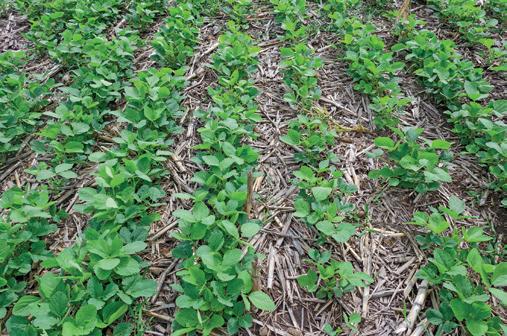
Agreena’s third-party verified and tradeable CO2 certificate ownership sits directly with the farmer, who can choose to keep them, sell them to institutional or private organisations, bundle the certificates with their crops, or work with Agreena to achieve the best price.
The number of certificates a farmer can earn is based on the adoption of regenerative farming practices, which reduce greenhouse gases (GHG) and remove CO2 from the atmosphere and store it in the soil.
Participants in the AgreenaCarbon pro gramme receive up to three certificates per hec tare, depending on the practices adopted, such as sowing cover crops or no-till farming. The cer tificates are currently selling for £20-40 each.
Farmers should take independent advice be fore signing up to a carbon scheme and satisfy themselves that the scheme meets their busi
Tree planting and woodland creation can help secure a more sustainable future for farm businesses, say rural consultants.
Strategic tree planting brings financial and environmental benefits, says Robbie Brett, farming consultant with Ceres Rural. A range of grants can help establish and management of new woodlands, he adds.
“Woodland is long-term, so planning and management is critical. Knowing what you want to achieve with any woodland is important too – trees can lock up carbon and support nature recovery, as well as contributing to wider society goals.”
Funding is available from the Forestry Commission, the Woodland Trust and via Countryside Stewardship – as well as from private initiatives. Trees are also subject to a range of tax reliefs if woodland is managed as a commercial investment.”
Both the Woodland Creation Planning Grant and the England Woodland Creation Offer (EWCO) can be used to plan and pay for tree planting, although the initiatives have different min-
imum area requirements of between 1-5ha.
“These schemes provide up to £30,000 for planting and up to £8,500/ha for creating new woodland. Maintenance payments of £300/ha/year are included for the first ten years of the EWCO, which allows farmers to apply with several parcels of woodland.”
The Woodland Trust’s MOREwoods scheme covers up to 75% of planting costs and allows multiple blocks of planting, The trust's MOREhedges grant subsidises hedging that creates ecological links with woodland.
Trees can also be included within Countryside Stewardship applications. Up to £6,800/ ha is available for the creation of new woodlands. Current payment rates are £1.28/tree, with some variation between native and non-native species.”
For farmers wishing to generate a carbon-based income from new woodland, it is essential to register the plantation with the Forestry Commission’s Woodland Carbon Code before planting commences, says Mr Brett.
Carbon units can be sold as



Land agents Savills has Jonny Griffiths (right) to take up a new role as head of international farmland.
Mr Griffiths – who grew up on a Cambridgeshire farm – will focus particularly on acquisitions and valuations of farmland around the globe for a range of clients, based on the theme of sound agricultural investments with a natural capital overlay.

He joins Savills from Nuveen Natural Capital, where he worked
on the establishment and implementation of its European farmland investment.
This included formulating investment strategies, origination, analysis and due diligence for farmland transactions

Long-term fundamentals for global agriculture remain solid, says Savills, with the world population expected to reach 9.2bn by 2100. At the same time, changes in diets will further fuel demand for farmland, it adds.

early as five years after planting with the Government-backed Woodland Carbon Guarantee ensuring a minimum price for carbon credits but still allowing farmers to sell them on the open market, if preferred.
“Baseline your soil carbon before you start planting if you are planning to sell that as well,” advises Mr Brett. If carbon seques-
Savills executive director Andrew Harle said: “Our client base is both increasingly global in its outlook and conscious of the role rural land has to play in mitigating the effects of climate change and contributing towards net zero targets.




Mr Griffiths said: The international farmland space is very varied and there is no better time for Savills to be establishing first-mover advantage within this market amongst its competitors. I look forward to growing this new segment of the Savills business.”
tration is the sole purpose of the new woodland, conifers may be the best choice, as they sequester carbon more quickly.
“Time spent considering the various options and the best way of achieving your end goals is a good investment. Most farms will have pockets of land suitable for tree planting and will be eligible for one of the funding schemes.”
For rural businesses seeking ways to navigate the current economic headwinds, understanding rural tourism and current trends of wellness, sustainability and experience-led offerings could provide inspiration for new ideas.
Recent estimates from the Office for National Statistics indicate a 27% fall in the number of UK residents travelling overseas in May 2022 compared with May 2019. Meanwhile, sustainability continues to be a growing feature of the tourism sector and beyond, as consumers increasingly choose environmentally responsible brands that match their ideals.
According to Booking.com’s annual sustainable travel report, 71% of UK travellers say sustainable travel is important to them (a 10% increase on 2021); a third say they have stayed in sustainable accommodation over the past year; and 62% intend to do so at least once in the coming year.
As consumer interest grows, so too do the possibilities for rural businesses. Key to helping diversified rural businesses survive and succeed over the coming years will be an understanding of how potential customers feel about the rising cost of living and its impact on leisure spend.
It seems likely that given the pressure on people’s finances, greater confidence in UK weather and increasing concerns over carbon footprint, that stronger demand for UK holidays will return in 2023 – however, offering ‘fair value for money’ will be critical.
In addition, the ability to demonstrate a businesses’ environmental credentials will be important. Not only will getting to grips with the farm or rural estate’s own carbon footprint help provide competitive advantage and win customer loyalty, it can also bring potential business cost savings, increased efficiencies, and an important direction of travel in line with government net-zero policy.
From staff car sharing and waste composting to new cycle paths and woodland creation, there are a range of investments that rural enterprises could be considering.


Farms in the East of England that are thinking of diversifying can now apply for support through the Rural England Prosperity Fund, which provides capital grants to help rural businesses develop new products and facilities that benefit the local economy.
Investment will be based on local priorities and support projects like converting farm buildings to other business uses such as visitor accommodation or creating new footpaths and cycle paths.
As ever, the rural sector will need to draw on its versatility and creativity to maximise the opportunities – and I would encourage anyone interested to get in touch.
Hugh Vere Nicoll Rural Tourism, Leisure & Events 07971 762 790 hugh.nicoll@savills.com savills.co.uk
•
casualties. It is supported by the De partment for Transport, British Cy cling and the British Horse Society.
An NFU Mutual poll found that 23% of people had been involved in a collision or accident on a rural road. There were 10,471 fatalities or seri ous injuries on rural roads in 2021.
Within this figure, the number of peo ple who lost their lives on rural roads increased by 7% to 981 in 2021 – more than two-thirds higher than the num ber of people killed on urban roads.
This is despite the typical stretch of rural road seeing just 11,700 vehicles in a 24-hour period, 35% fewer than ur ban roads, which saw 18,100 per day during 2021, said NFU Mutual spe cialist Jade Devlin.

“These latest figures confirm our fears that an increase in rural road traffic has resulted in an increase in the number of fatalities and casual ties on countryside roads – with vul nerable road users generally bearing the brunt of it.
“Rural roads are a lifeline to many isolated people and a shared space for the entire population, so this is a na tional tragedy which is rightly a key concern of our customers and the pub lic at large.”
Ms Devlin added: “That is why, with our partners, we’re urging all road us ers to act now to ensure that any fur ther increases in traffic on rural roads do not lead to a rise in tragic and avoid able deaths.”
When drivers were asked about their greatest concern when using ru ral roads, 36% of respondents high lighted other drivers, with another 36% expressing concerns surrounding vul nerable road users like walkers, cy clists and horse riders.
Winding and narrow roads were a big issue for 18% of respondents. Farm vehicles were the biggest concern for 10% of drivers. To tackle the issue of rural road safety, 36% of respondents wanted to see lower speed limits on countryside roads.
When measured by distance trav elled, vulnerable road users such as cyclists, motorcyclists and pedestri ans are disproportionately likely to be killed or seriously injured on rural roads, when compared to car drivers and their passengers.
HThe British Horse Society says 2,943 road incidents involved horses in 2021 – a year-on-year rise of over 200%. Since 2010, more than 500 horses and 44 riders have lost their lives on rural roads.
The Highway Code says drivers should slow down to a maximum of 10mph when they see a horse on the road, be patient and
not sound their horn or rev the engine, over taking only when it’s safe to do so and leav ing at least two metres width if possible.
British Horse Society safety director Alan Hiscox said: "Rural roads are becoming more challenging for horse riders. You only have to look at the figures; in 2021 at least one horse was killed every week on UK roads.
“While most riders would prefer not to ride on roads, the lack of off-road access
means using rural roads has become a ne cessity. It is, therefore, more important than ever that drivers are considerate when pass ing horses.”
Ms Devlin said: “Rural road safety is the responsibility of each and every road user, and only by respecting fellow road users and respecting the unique hazards presented by rural roads can we reduce the burden of road accidents in the countryside.”
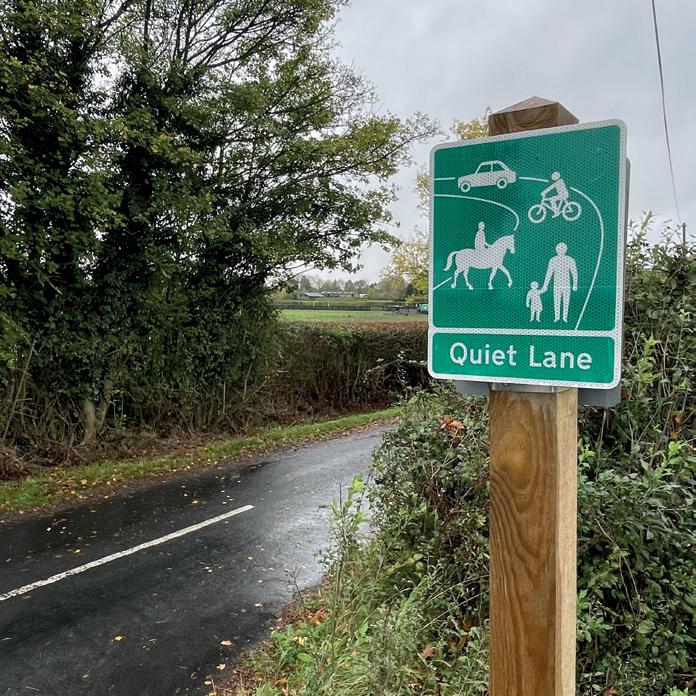








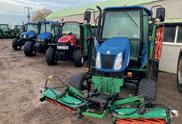









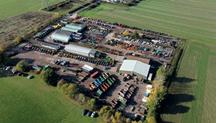

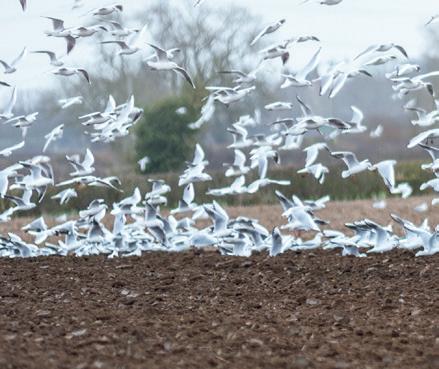
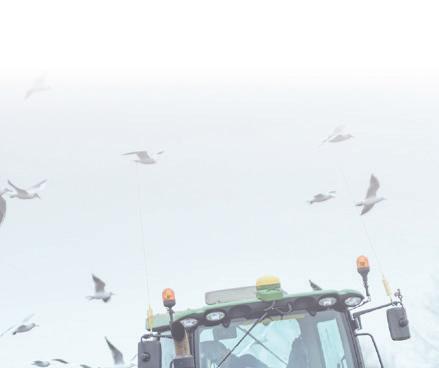
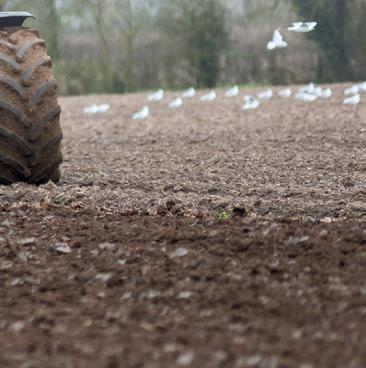
Farming has changed almost beyond recognition over the past 50 years – and not always for the best, says Fen Tiger.
An old agronomist friend of mine has decided that next summer 2023 will herald his final farewell to farming.
He came from his father's small farm to pursue a career in agronomy back in the 1970s. Having since walked thousands of miles over his lifetime, his skills are unquestionable and knowledge of all things farming unrivalled.
A few firms and many farms later, though, he has decided he has had enough. It isn't that he has fallen out of love with farming itself – he came into the job to grow crops, maximise yields and feed the nation. And he has done very well indeed.
But in his heart, deep down he believes something has gone wrong with farming. He no longer feels the industry has the drive

it needs. Dare I say it, he has also probably fallen out of love with the job and how it has moved away from its original aims.
Many of his contemporaries will agree he has a point. And a good one at that.
Food production and the tried and tested methods that have stood the test of time are being abandoned in the clamour for Net Zero by 2050.
Very much a plough man, my friend maintains that in some circumstances the plough is still king. Yet many of his farms feel under pressure to leave the plough in the nettles and use other techniques to establish their crops.
This is not perhaps because those techniques enhance and improve the crop. Rather it is because of carbon and emissions and the pressure farmers feel to satisfy the latest trends – whether the conditions allow it or not.


He understands plant nutrition and soil health better than most. But his mantra has always been, “if you don't put it in, you won't get it out”. No wonder he feels that reducing pesticide and fertiliser applications are wrong if we want to feed the country.
At the same time, pressure of the job has never been greater – not only because of red
tape and mountains of paperwork, but because the fear of getting things wrong weighs heavily on his mind.
In his role as an agronomist, he has always been a sounding board for farmers with their ideas and cost assumptions. Time was when farmers used to spend what the crop in question to reach a successful harvest.
These days, a fixed budget is produced as soon as the tractor leaves the shed and not a penny more is spent. Yet this fails to take into account the season's growing conditions, costs or his agronomy skills.
No wonder then he feels undervalued and undermined by the constant need to decrease costs or reduce carbon levels.
He has become disillusioned with the need to defend what he does and he believes the industry has its chin on the floor.
His new junior has the unenviable task of following in his footsteps for the next 12 months or so – meeting established clients and trying to pick up some new ones.
It is a difficult job, especially as his current employer wants to go down the fee-paying route – a price charged per acre. He says farmers don't like acreage payments and prefer to have any cost added to the chemical bill. We shall see how right he is.
In the meantime, retirement looms and he is ready to go. Another crop-walking has left the field. The industry is not where it should be or even certain where it is going. These days it is all drones and computers.
I wish him a happy retirement.
If you don't put in, you won't get out

